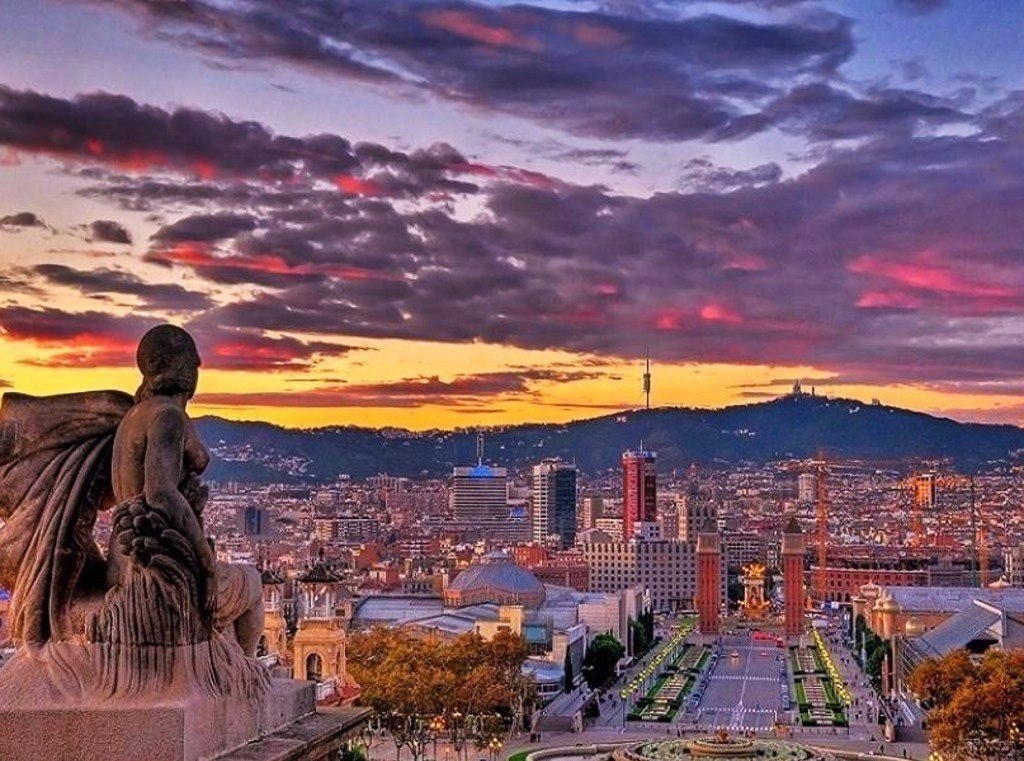Best Cities to Visit Near Barcelona- Day and Weekend Trips
Shreya
Updated on Feb 05 • 12 minute read
Living
Whether you live in Barcelona or are just visiting, DON’T limit yourself to just exploring this city.
There’re plenty of beautiful places to visit around Barcelona– from mountains and monasteries to beaches and beautiful historic centres. No matter where you decide to go, it’s certainly worth doing a weekend or day trip from Barcelona by train or car.
11 all-time best day trips from Barcelona
With plenty of amazing places to go to near Barcelona, it can be overwhelming to narrow down your choices. To help, we’ve summed up 11 best day trip destinations from Barcelona that cater to history, art or culture buffs, adventure enthusiasts, and wine lovers.
- Cadaqués
- Tarragona
- Girona
- Begur
- Sitges
- Montserrat
- Figueres
- Vic
- Andorra
- Penedès
- PortAventura Park
Beach recommendations are in the next section.
1. Cadaqués
“
A town so picturesque that it became the muse of several artists such as Pablo Picasso, Salvador Dalí, and Luís Buñel.
”
Why we love Cadaqués is because it’s this quaint little fishing village located near the border of France. It’s unlike anything else you’ll see in Catalona; a coastal town surrounded by beaches on one side and gorgeous mountains on another. And not to forget, the white brick houses dotting the historic square make for a stunning view as well.
What to do in Cadaqués
Go for scenic boat rides, explore the beaches, walk along the cobblestone streets, or visit the Church of Santa Maria.
15-minute walking from Cadaqués is the neighbouring village of Portlligat where you’ll find one of Dalí’s homes. Reserve your tickets in advance as it’s almost impossible to get tickets on the spot.
How to get to Cadaqués
Cadaqués is 170km away from Barcelona.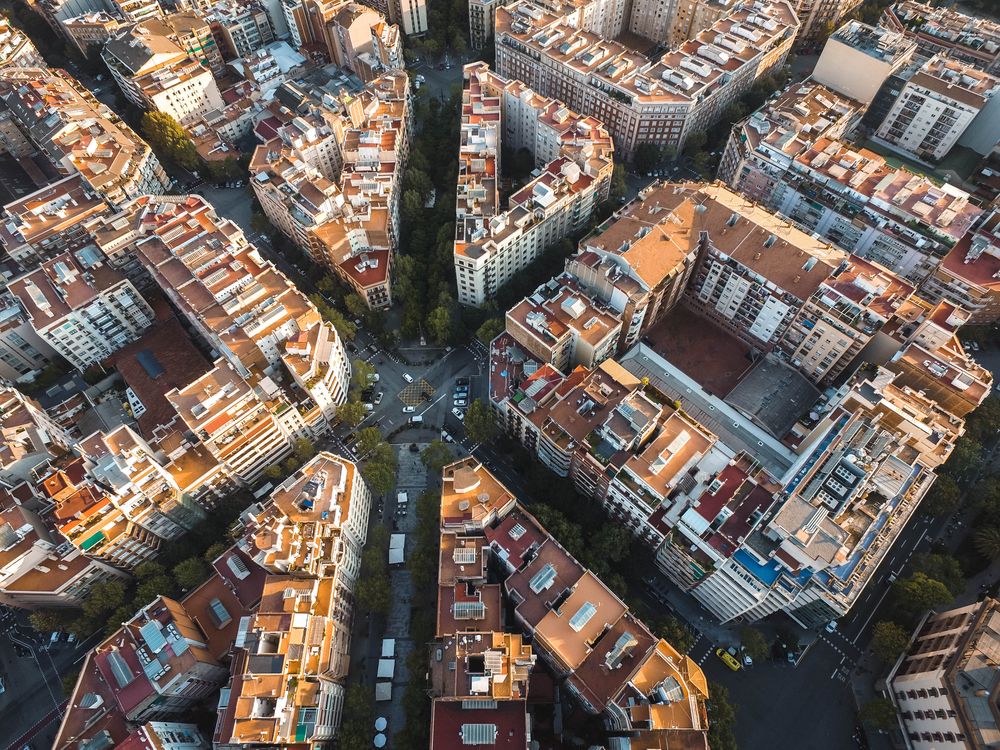
2. Tarragona
Time travel in Tarragona; it’s the ultimate dream destination for those who love (Roman) history and archaeological artefacts.
Tarragona used to be the Roman city of Tarraco – the oldest Roman port city in the Iberian peninsula. Today, the archaeological ensemble of Tarraco is recognised as a UNESCO World Heritage Site since a lot of the relics are well-preserved.
What to do in Tarragona
Visit the seaside amphitheatre which was built in the 2nd century BC. Back in the day, nearly 15,000 spectators could watch the gladiators or public executions.
See the remains of the 1st Century AD Roman Circus (Circ Roma) where chariot races took place. The circus has since been used as a palace and a prison, until becoming a ruin.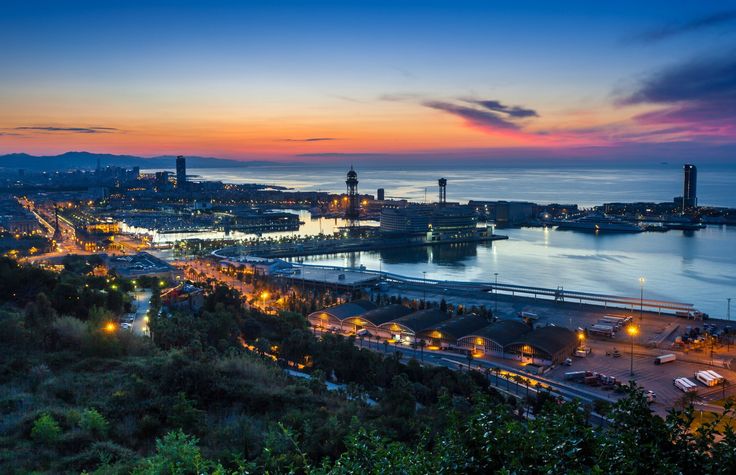
Take the impressive underground tunnels to the other end of the Circus to see the Praetorium– a large tower that belonged to the provincial forum (a square or central marketplace).
Visit the National Archaeological Museum of Tarragona to see some of the ancient relics and artefacts.
You can also walk past Parc de l’amphithéatre, touch the railing at Balcò del Mediterrani for good luck, or visit the beach, old town, or the cathedral.
How to get to Tarragona
Tarragona is roughly 100km from Barcelona. Taking public transportation is an easy and convenient way to get here; it takes about 1h 15m. Since multiple Renfe trains depart frequently, we recommend looking online to see what time tickets are cheap.
Driving a car here will take you between 1h – 1h 25m.
3. Girona
“
This medieval city was the backdrop in plenty of Game of Thrones scenes.
”
Girona is one of those medieval cities where you can walk on cobblestone streets and gaze at centuries-old architecture influenced by the Roman, Catholic, Jewish, and Moorish cultures.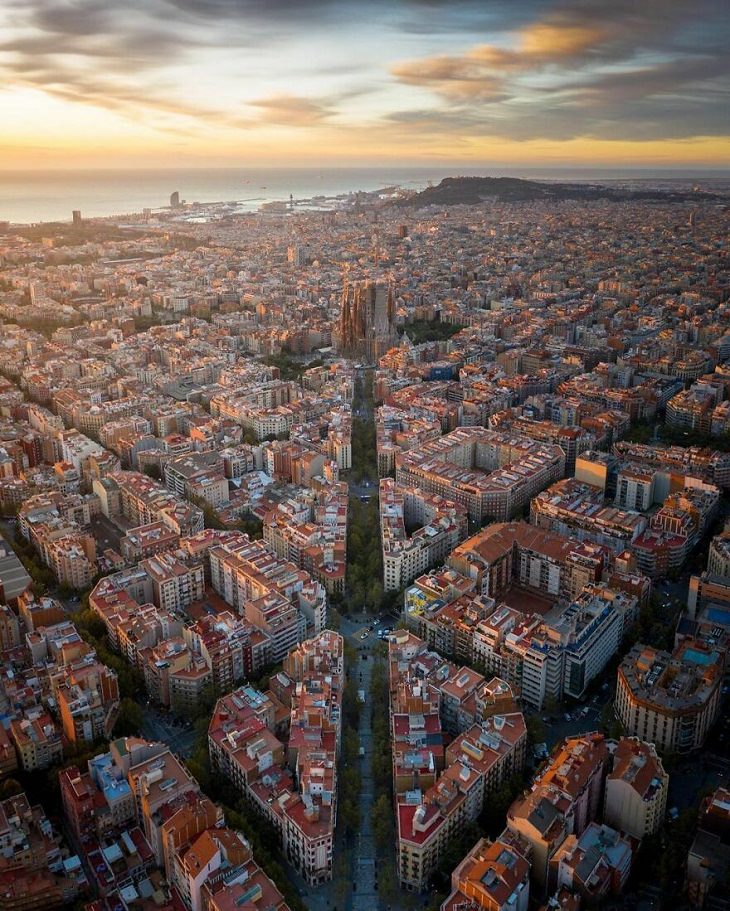
The locals often call it the Venice of Catalonia as several rivers meet here. The most famous is the River Onyar where you can marvel at the reflections during sunset.
What to do in Girona
Visit the best-preserved Jewish quarter in all of Europe.
Walk through Barri Vell, Girona’s historic quarter and notice the cathedral. You might recognise the Great Sept of Baelor or parts of Braavos, as seen in Game of Thrones.
Visit the Garraotxa Volcanic Zone Natural Park to see inactive volcanoes. This place is perfect for hikers or adventure seekers.
If you plan ahead, you can make a reservation at El Cellar de Can Roca, which is considered one of the best restaurants in the world!
How to get to Girona
Girona is 101km from Barcelona. By car, it usually takes 1h 25m. You can also take public transport, which takes between 40m (high-speed train) to 1h 20m.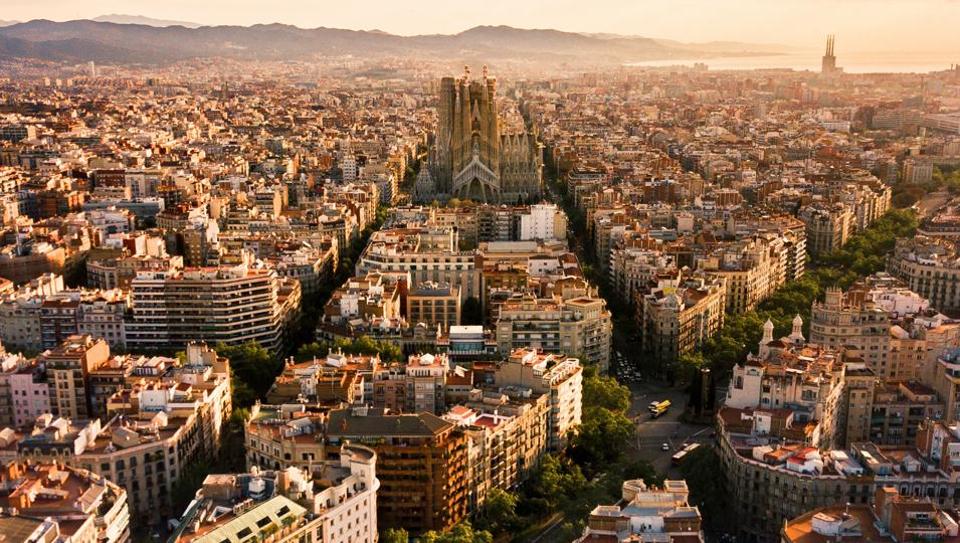
4. Begur
Begur is a sight to behold. 20km of coastline is divided into 4 sections by the staggering cliffs. The numerous beaches here boast crystal clear water and are enveloped by cute coves and bays. No matter where you go, you’ll have a phenomenal view.
What to do in Begur
Some of the best beaches outside of Barcelona can be found in Begur – beaches like Aiguablava and Platja Fonda.
Make your way through the charming town square and climb atop the village to see the remains of the crumbling Begur castle which dates back to the 11th century.
If you’re interested in Dalí, visit Gala Dalí Castle (Castle of Púbol) in Pùbol– A castle that Salvador Dalí gifted to his wife and muse Gala.
Ceramics are a big thing here. It’s believed that the first pottery market was held in Begur in 1511. Not surprisingly, Ceramica de la Bisbal is a protected region due to its craft.
How to get to Begur
Begur is 129km from Barcelona. It takes approximately 1h 35m by car and is the recommended way to travel to Begur. Public transport takes 3 to 4 hours from Barcelona due to multiple changes.
5. Sitges
Sitges is one of the most recommended day trips from Barcelona because it has great infrastructure and something for everyone’s interest.
This beautiful coastal town has winding cobblestone alleys that are dotted with promenades, 17 beaches, art galleries and museums, local shops, and numerous restaurants and bars that boast a thriving nightlife.
“
Sitges is one of the most LGBTQ travel-friendly destinations in Europe. The Gay Pride festival in June attracts a lot of visitors to this coastal town.
”
What to do in Sitges
Sitges offers 17 stunning beaches. With so many options, it’s easy to find a beach that matches your preference, whether that’s nudist, party, family, or gay friendly.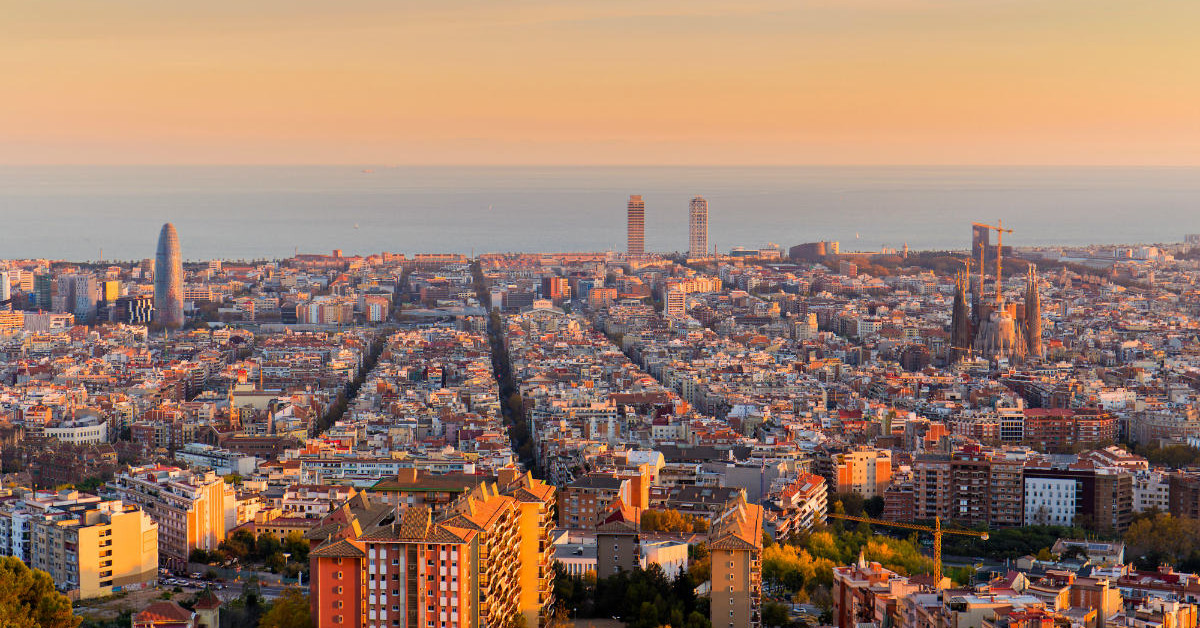
Art lovers who want to explore more than Barcelona’s art scene will be happy here. Visit the Cau Ferrat Museum for Catalan flavoured modern art or Museu Maricel which offers stunning views as it’s atop a hill overlooking the Mediterranean sea.
You can also tour Palau de Maricel (Maricel de Terra or Maricel Palace) which is an art and architecture ensemble featuring Noucentista style.
There’re also plenty of festivals to keep you busy. Join the Carnival in February, Gay Pride in June, Festa Major in August (3-day festival), or the Sitges Film Festival in October.
How to get to Sitges
Sitges is pretty close to Barcelona– 39km away. You can arrive in Stiges in 40 minutes by car or 35-40 minutes by public transport.
6. Montserrat
A trip to Montserrat is perfect for those who want to combine nature, culture, history, and some active sport like hiking.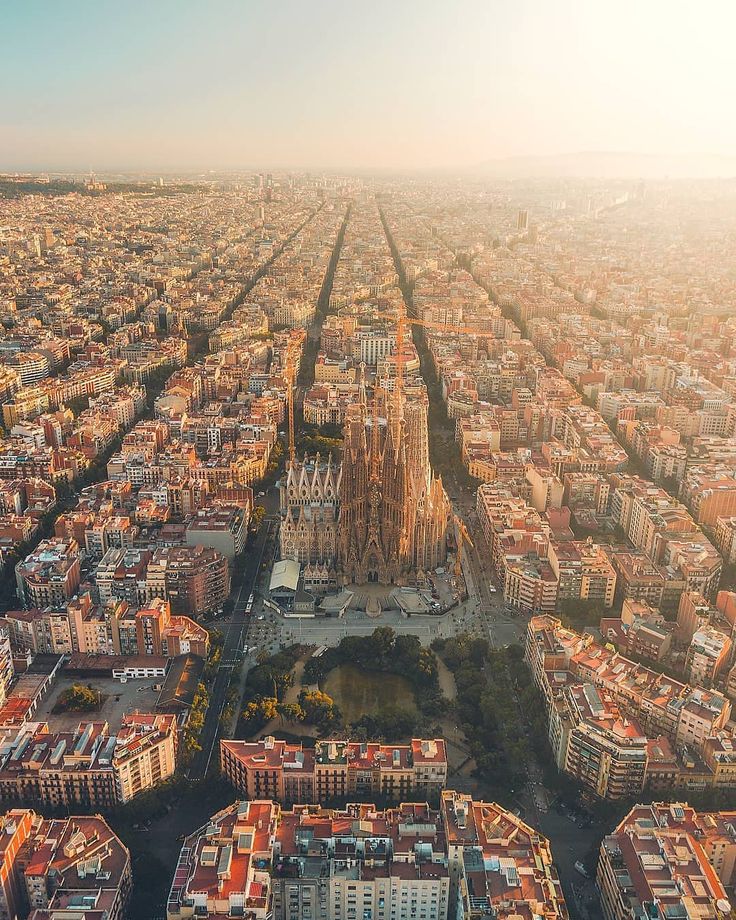
The 1236m high serrated or jagged mountains of Montserrat attract thousands of pilgrims and tourists all year round due to the mountain’s religious significance and beauty.
“
In Catalan, the mountain is called Mont Sagrat, which roughly translates to sacred mountains.
”
What to do in Montserrat
One of the biggest highlights is seeing the Black Virgin statue at the Basilica of Montserrat. It’s said that the statue has mystical and healing powers.
“
Legend says that tiny wooden statue of Black Virgin has turned black over time because of all the candles that were lit in front of it over centuries.
”
Pay a visit to the Benedictine Abbey where you can find Benedectine monks who’ve devoted their lives to prayer.
Head to the monastery. Legend has it that if you touch the ball that Virgin Mary carries and make a wish, it’ll bring you good luck.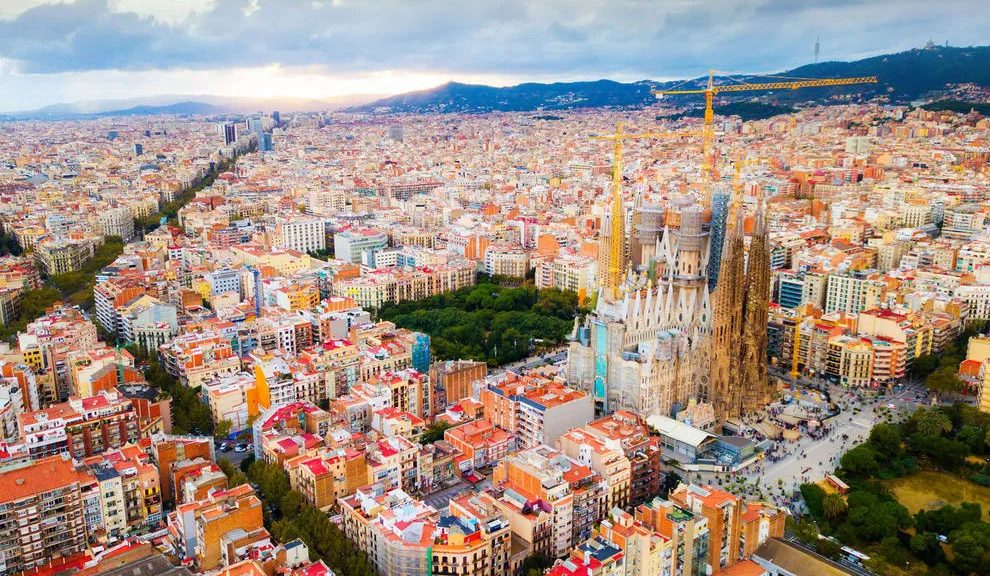
You can’t miss listening to the L’Escolania or the world-famous choir made of 14-year-old boys at 1:00 P.M. What makes the choir group extra special is that there’re files that trace the origin of the choir group to the 14th century.
Hike up the mountain or do some rock climbing to make it an adventurous and active trip.
Visit the Montserrat Art Museum to understand the history of Montserrat Monastery and see artworks from artists like Pablo Picasso and Salvador Dalí.
How to get to Montserrat
Montserrat is 60km from Barcelona. If you’re driving, you can reach there in about an hour.
You can also get to Montserrat by taking a train (Line R5) from the España rail station. You can get down at Monsitrol de Montserrat to take the train or Aeri de Montserrat to take the cable car to the top.
7. Figueres
One of the most charming towns in Costa Brava is Figueres. It’s very close to the border of France and is the perfect place to admire art and history via the many museums in this town.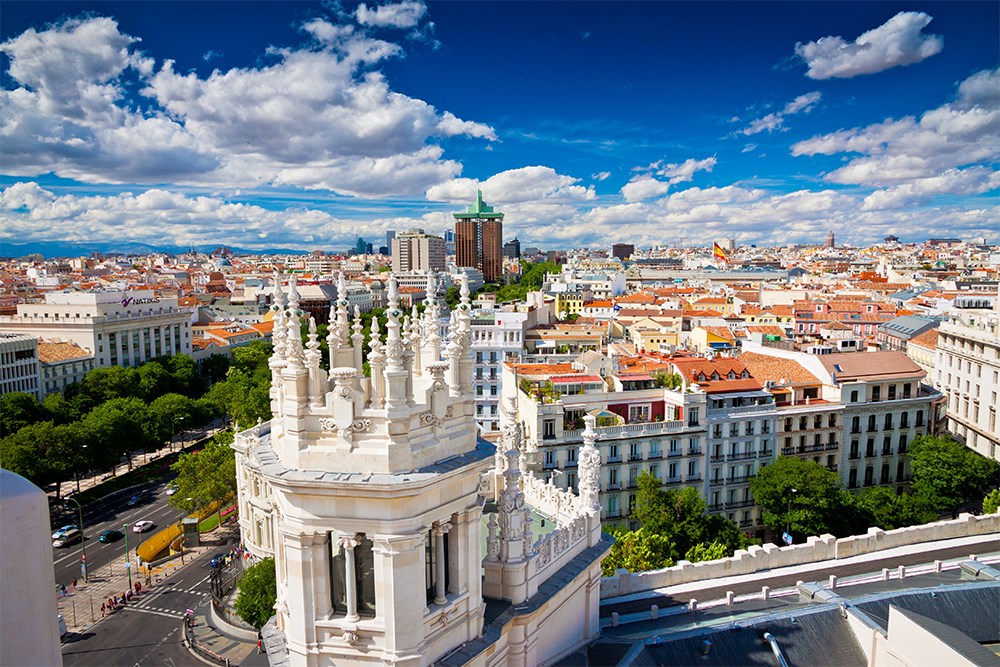
“
Figueres is the birthplace of Salvador Dalí and houses one of the most important Dalí museums in all of Spain.
”
What to do in Figueres
The biggest highlight of Figueres is Teatro Museo Dalí, which is a quirky building that was once a theatre and now a museum that houses Dalí’s collection.
Other museums in this town include the Museu del Joguet de Catalunya, a toy museum perfect for kids. The Empodra Museu is perfect for culture enthusiasts and the *Museu de la Tecnica de l’Emporda is best for technology enthusiasts.
How to get to Figueres
Figueres is 138km from Barcelona. It takes nearly 1h 30m to get here from Barcelona, by both car and public transport.
8. Vic
Want to travel back in time? Or do you want an off-the-beaten-track experience? Then we highly recommend the medieval town of Vic.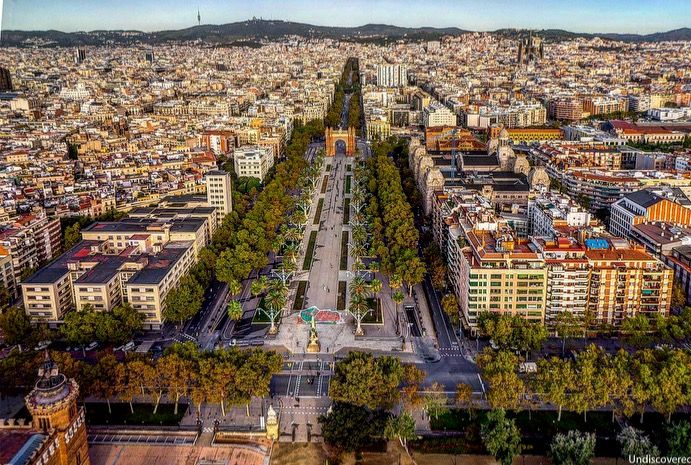
Vic is the perfect representation of Catalan’s culture and history; several of the well-preserved medieval buildings can be seen as you walk through the town’s 2 historic quarters and the main square – Placa Mayor (Plaza Mayor).
What to do in Vic
Apart from taking in the sights around the 2 historic quarters and Placa Mayor, it’s worth visiting the 11th century Sant Per Cathedral and the Roman temple which was built in the 2nd century.
Museu Episcopal de Vic gives you a glimpse into the life under the Romanesque and Gothic eras. In the museum, you can see paintings, textiles and other archaeological artefacts that represent the history of Catalonia.
Interested in architecture? Then walk past Casa Comella and Casa Costa.
How to get to Vic
Vic is 71.1km away from Barcelona. A car ride takes about an hour. Public transport will take 1h 10m.
9. Andorra
Although a different country, Andorra still makes for a great day or weekend trip destination from Barcelona as it’s nestled between Spain and France.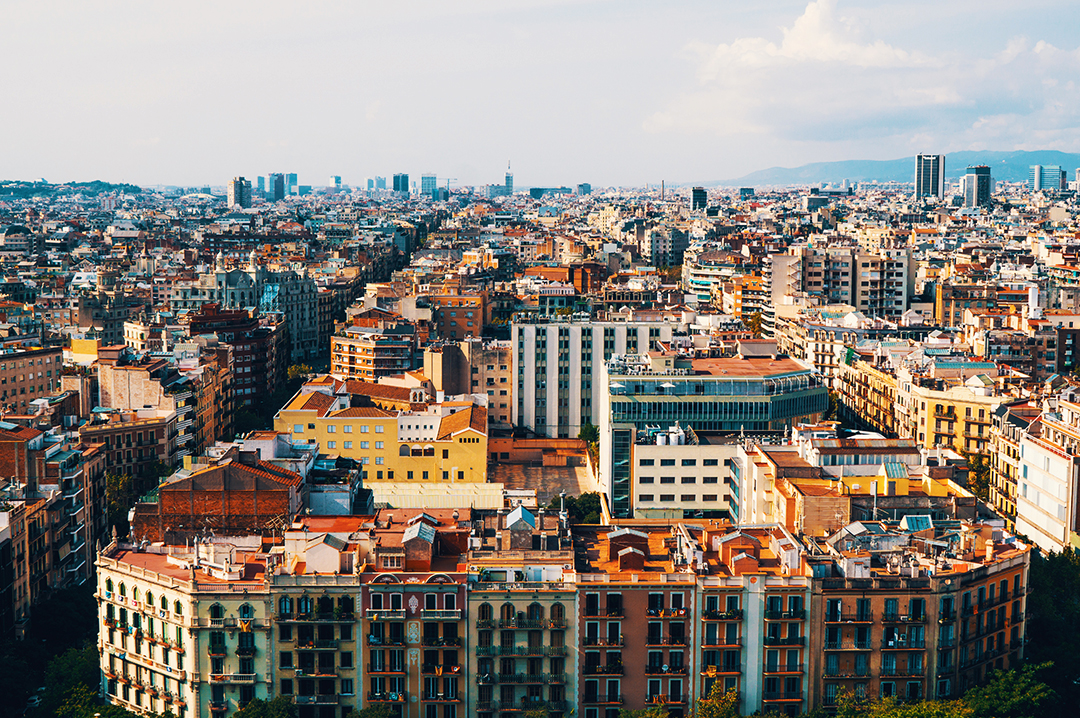
Andorra is where adventure takes the forefront. It’s situated in the heart of the Pyrenees mountains and is at an average elevation of 2000m.
“
Andorra is one of the smallest countries in the world and is considered a micro-state.
”
What to do in Andorra
Adventure lovers will love Andorra. In the summers, you can go on walking trails, hike the mountain, go mountain biking, or even go on the equestrian trails. If you’re interested in water sports, why not head over to Family Park Canillo?
“
The Madriu-Perafita Claror Valley is a UNESCO-listed trail as it takes you through meadows, forests, and the valleys.
”
In winter, the region completely transforms into a skiing paradise. Enjoy skiing and various other winter sports such as snowboarding.
For some relaxation, head over to Centre Termolúdic Caldea, the largest spa complex in Southern Europe.
How to get to Andorra
Andorra is further inwards. It’s 197km from Barcelona and takes nearly 2h 35m by car. We don’t recommend going by public transport as on average it takes about 3h 30m to 4h 30m.
10. Penedès
The Penedès region is a temple for wine lovers. It’s only an hour away from Barcelona and is one of the most prominent wine-producing regions in Spain after Rioja and Priorat.
Although this region produces wine, they’re primarily known for their top-notch Cava – Spain’s answer to France’s Champagne.
What to do in Penedès
Join an organised wine tour, arrange for a self-organised trip to the wineries and vineyards, or go on a cycling tour of this region.
How to get to Penedès
Penedès is fairly close to Barcelona as it’s 58km away. It takes 50 minutes by car, making it the perfect day trip destination.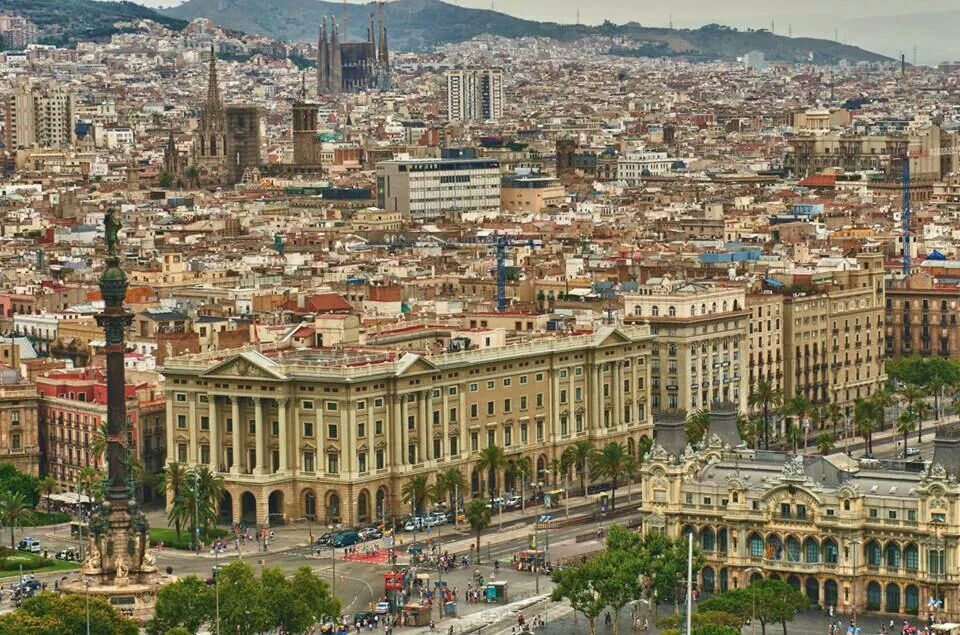
11. PortAventura
Who doesn’t love amusement parks?! PortAventura is the largest theme park in Spain and you don’t get just 1 but 3 fantastic worlds to explore.
You can explore 1 park or get a combo ticket to enjoy 2 or 3 parks. In this case, it’s recommended that you make a weekend trip out of it and stay at one of the nearby hotels.
“
Book a ticket + transport package via PortAventura which includes a return journey from any Rodalies de Catalunya station. An adult ticket costs €51 and €45 for kids and seniors.
”
What to do in PortAventura Park
PortAventura Park is a classic adventure park with rides suitable for people from different age groups.
Caribe Aquatic Park is for those who love a good water adventure.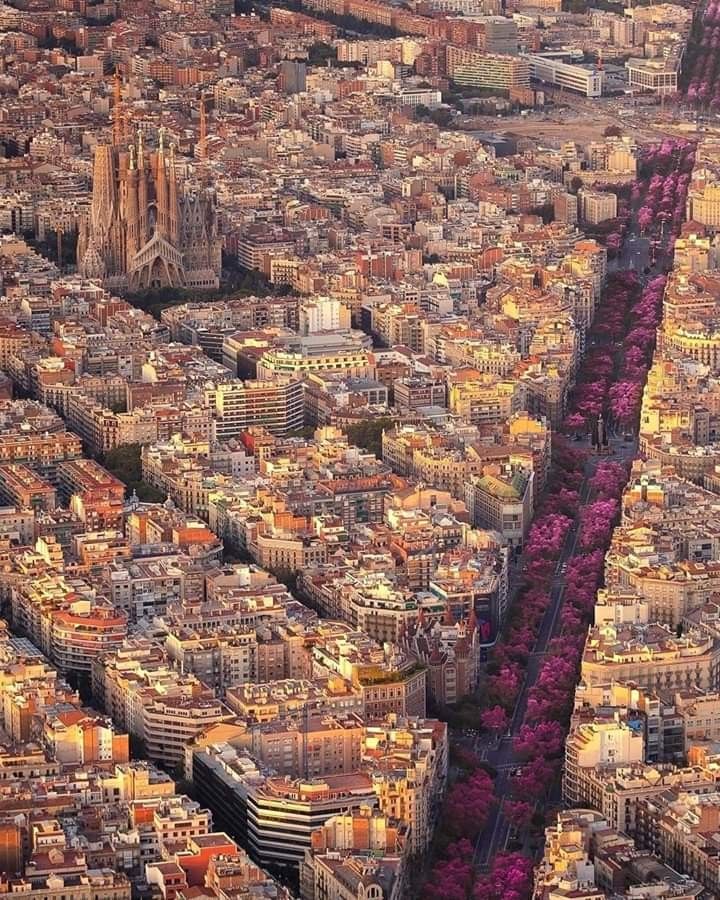
Ferrari Land is for the grown-ups or adrenaline junkies. You can try out Europe’s highest and fastest roller coaster here!
Need a break? No matter which park you choose, you can enjoy shows and parades at different times throughout the day.
How to get to PortAventura Park
The best way to get here is by train, especially if you choose the ticket + transport package. The journey takes about 1h 30m.
If you’re going by car, it’ll take 1h 20m.
6 best beach getaways near Barcelona
Spain has the most blue flag beaches in the world. So how can we not include a trip to the beaches nearby Barcelona city?!
| Beach | Province | How to arrive | |
|---|---|---|---|
| Platja Cala Aiguablava | Begur | Car (1h 40m) | |
| Playa Fonda | Girona | Car (1h 40m) | |
| Platja de Castelldefels | Barcelona | Car or train (30m) | |
| Gavà Mar | Barcelona | Car (24m), train (50m) | |
| Cala Fonda (Waikiki) | Tarragona | Car (1h) and 15m walking | |
| Sitges (several beaches) | Barcelona | Car (40m), train (35m) | |
| Platja Garraf | Barcelona | Car or train (32m) | |
| Calella de Palafrugell | Girona | Car (1h 25m) | |
| Sant Pol de Mar (several beaches) | Barcelona | Car (40m) | |
| Tossa de Mar (several beaches) | Girona | Car (1h 16m) | |
| Calella de Palafrugell (several beaches) | Girona | Car (1h 25m) | |
| Platja de Llavant | Barcelona | Car (15m), train (35m) |
Best weekend trips from Barcelona
Planning a trip longer than just a day? Here’re some nearby cities that are well worth visiting:
-
Valencia– Valencia, the third-largest city in Spain is located 303km away and takes nearly 3 hours to reach from Barcelona.
Whether you want to try the original paella from Valencia or experience the City of Arts and Sciences, this laid back city has something for everyone, and at a cheaper price.
-
Madrid– The capital of Spain is 3 hours away if you take the high-speed train from Barcelona. Madrid’s got unique neighbourhoods, a lively nightlife, an incredible art scene and plenty of historical buildings.
-
Ibiza– Ibiza island is known for its globally renowned nightlife. But you can also enjoy yoga retreats, spas, beautiful beaches, local markets and cuisine, the UNESCO protected Dalt Vila, or the uninhabited island and natural park Es Vedrà. You can reach Ibiza in an hour with a flight or travel overnight with a ferry.
-
Màlaga– Although it can take upwards of 7 hours with the high-speed train or 9 hours of driving, Màlaga is well worth the visit.
Explore the art scene, walk where Pablo Picasso was born, have a night out, or simply enjoy the beautiful promenades and 16 beaches surrounding this port city in Andalusia.
-
Paris– With France bordering Spain, you can easily make a trip to Paris which will take 6h 40m with the Renfe-SNCF high-speed train. Enjoy the romantic atmosphere, people-watch while sipping coffee, visit the famous Eiffel tower, go to art museums, or take the unbeaten path to explore the non-touristy side of Paris.
Apart from these 5 cities, we also highly recommend making a weekend trip to Sitges, Girona, Tarragon, Andorra, and Costa Brava as these places deserve more than just a day.
Best Cities to Visit Near Barcelona
Now that you know the best cities or beach destinations to visit, it’s time to get out there and explore! But before you go, read up on Spanish culture and traditions to appreciate these destinations even more.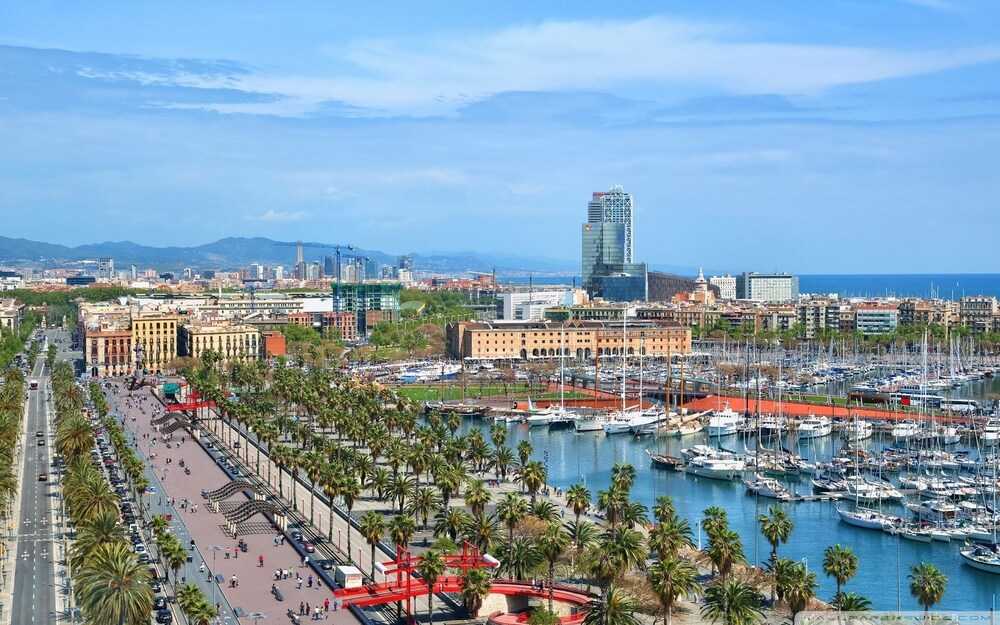
Please reach out to [email protected] if you have any suggestions or inquiries about the content on this page.
Barcelona | Creative Cities Network
About the Creative City:
Since the 19th century, Barcelona, a city of 1.6 million inhabitants, has been universally recognised as a publishing centre for Spanish, Latin American and Catalan literatures. Popular with multinational groups and having its own thriving independent publishing scene, the sector adds a 1.2 billion Euros value to the regional economy and has been consolidated in the last two decades both at the local level, as demonstrated by the doubled number of public libraries, and at the international level, with 44.8% of the book exports going to the region of Latin America.
The sector of literature in Barcelona maintains its international dynamism through the organization of a wide array of international book fairs including Liber, which is the most important Spanish language fair in Europe with a special focus on digital content.
In order to further foster creativity, the Municipal Culture Bureau provides 130,000 euros to support literary events and enhance the city’s international impact in the field. In addition, Barcelona is one of the cities that initiated the Agenda 21 for culture, testifying to a rich experience in international cooperation and commitment to placing creativity at the core of its urban policy agenda, by working toward an inclusive development approach based on economic feasibility, social equity, environmental responsibility and cultural vitality.
Added Value:
As a Creative City of Literature, Barcelona envisages:
- nurturing the sector of literature at the local level by implementing a new facility enhancing the networks of local writers by redirecting the focus of cultural centres toward literature and by implementing new projects to cultivate reading;
- hosting an annual International Editors’ Convention to discuss and promote the future of the publishing industry, with special emphasis on cooperating with other Creative Cities of Literature;
- dedicating a special part of the programming at the cultural centres and the literary festivals to the Creative Cities of Literature with the aim of fostering dialogue between diverse literatures; and
- taking the opportunity to host the UNESCO World Book and Copyright Day to increase visibility as well as contribute content to the Network.
Member since:
Contact:
Marina Espasa,
Institute of Culture of Barcelona,
Barcelona City Council,
bcnciutatliteraria@bcn.
Barcelona, Host of the 2017 Creative Cities of Literature Sub-Network Meeting
About: From 20 to 23 April, Barcelona will have the great pleasure to…
When:
Thursday, April 20, 2017 to Sunday, April 23, 2017
Know more
Barcelona (Spain) – all about the city, attractions and photos of Barcelona
Barcelona (Spain) – the most detailed information about the city with a photo. The main attractions of Barcelona with descriptions, guides and maps.
City of Barcelona
Barcelona is a city in the northeast of Spain, the capital of Catalonia. It is the largest metropolis on the Mediterranean coast with a population of more than one and a half million people and the second largest in the country. Barcelona is a lively seaside city and port with a magnificent cultural and historical heritage, a unique atmosphere and charming architecture. The center of Catalonia attracts with its mild climate and relaxed lifestyle, surreal buildings – masterpieces of Gaudí, beaches and the sea, delicious food and entertainment for every taste.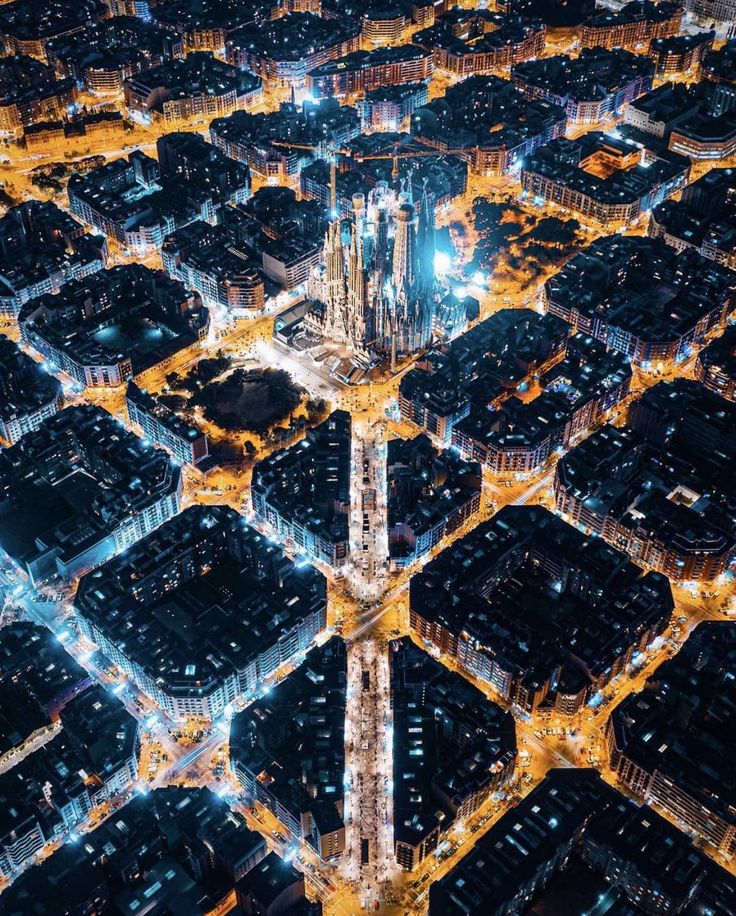
Barcelona’s landmarks span nearly 2,000 years of history and include: a medieval old town, a unique street grid that reflects 19th century urban planning trends, and many interesting, unusual and even slightly fabulous buildings, of which the architectural delights of Antonio Gaudí stand out in particular. On the streets of the capital of Catalonia, you can easily find ancient rarities of the Roman past, medieval quarters and cathedrals, sculptural and architectural masterpieces of modernism and modernity. Barcelona is the city where Pablo Picasso and Joan Miro drew inspiration, where you can wander aimlessly through its streets, stumbling into charming corners, listening to street musicians or having a good time in cozy cafes.
Panorama of Barcelona
Areas:
- Ciutat Vella (Old Town) – the oldest part of Barcelona, the central area right on the Mediterranean coast. This is the main attraction, where most of the city’s historical sights are concentrated.
- Eixample – modernist quarter, building squares and street geometry.
- Gràcia – located in the northern part of Barcelona. This once separate city (founded in the 17th century) was annexed to the capital of Catalonia in the 20th century.
- Sants-Montjuïc – southern edge of the city. Here is the port.
- Sant Martí – eastern outskirts of the city.
- Inland Suburbs. Here is the famous Camp Nou stadium and the highest point of Barcelona.
- Geography and climate
- Tourist information
- Best time to visit
- History
- How to get there
- Shopping
- Video
- Map
- Comments
Places of interest
Geography and climate
Barcelona is located on the territory of the Iberian Peninsula on the Mediterranean coast, 120 km from the border with France. From the south, the city is bounded by the Collserola mountains and the Llobregat river, and from the north by the Besos river.
Panorama of the city
The climate is Mediterranean, with dry and humid summers and warm and dry winters. The hottest period is July and August. The coldest is January. Although even in winter the average temperature is about +10 degrees.
Tourist information
- Population – 1.62 million people.
- Area – 101.4 square kilometers.
- Language – Spanish and Catalan (or Catalan).
- Currency – Euro.
- Visa – Schengen.
- Time – Central European UTC +1, summer +2.
- 62% of the inhabitants of Barcelona are Catalans.
- 50% of the population is Catholic.
- Avoid walking alone in the El Raval and La Rambla areas late at night.
- Credit cards are accepted in most hotels, shops and restaurants.
- If you liked the service, it is customary to leave a tip in the amount of 3-5% of the bill.
- Tourist Offices are located at the following addresses: Plaça Sant Jaume, Plaça Catalunya, Estació de Sant and in the center of the Gothic quarter of Col·legi d’Arquitectes de Catalunya.
- VAT is 21%. Tax free can be returned from a purchase of 90 euros.
- No smoking in public places.
- Holidays: January 1 – New Year, January 6 – Day of the Three Kings, Good Friday and Easter, May 1 – World Labor Day, June 24 – St. John the Baptist, August 15 – Assumption of the Virgin, September 11 – national holiday of Catalonia, October 12 – national holiday of Spain, November 1 – All Saints’ Day, December 6 – Constitution Day, December 25 and 26 – Christmas.
- Barcelona has a metro network that consists of 11 lines. Public transport also includes buses and trams. The hills of Montjuic and Tibidabo can be reached by funicular.
- A single ticket is valid for public transport. The cost of one trip is 2.2 euros. Tickets can be bought on buses and at metro stations.
Best time to visit
The highest tourist season is July and August. At this time, the city is given to the “torn apart” by tourists. The locals mostly leave the city. Some restaurants and shops are closed, and hotel prices “bite”. The most comfortable time to visit Barcelona is the off-season. At this time it is warm here, but not hot. You can come to the capital of Catalonia in winter. During this period there are few tourists, it is quite warm and dry.
History
There are several legends about the founding of the city. One of them attributes the foundation of Barcelona to the legend of myths – Hercules, the other – to the Carthaginians. It is known for certain that the Iberians lived here. Their city was conquered by the Romans in the 2nd century BC. The Romans built a fortification here, the center of which was located near the square of St. Jacob. Thanks to its location and access to the sea, the city grew, grew rich and strengthened until it was conquered by the Visigoths in the 5th century.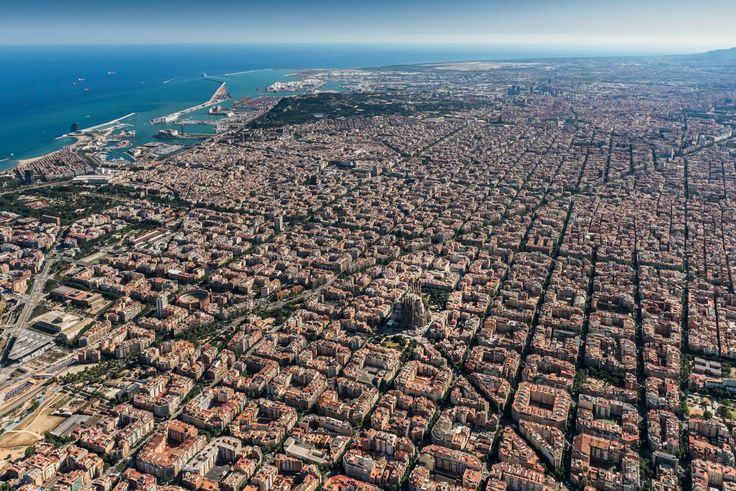
Streets of Barcelona
After the conquest by the Visigoths, the capital of their kingdom was located here for some time. At the beginning of the 6th century, in the vicinity of Barcelona, a battle took place between the Visigoths and the Ostrogoths, in which the latter won. In the 8th century, the Berbers took Barcelona. At the very beginning of the 9th century, the son of Charlemagne conquered the city and made it the capital of the Spanish brand. At the end of the 10th century, after the raid of Al-Mansur, the Carolingians lost control of the capital of Catalonia, which gained independence.
In the 12th century, Catalonia united with Valencia, forming the Kingdom of Aragon, which lasted until the 15th century. In the 1410 century, control of the city passed to the Castilian dynasty. In the second half of the 17th century, after the fall of the Catalan Republic, Barcelona was sacked.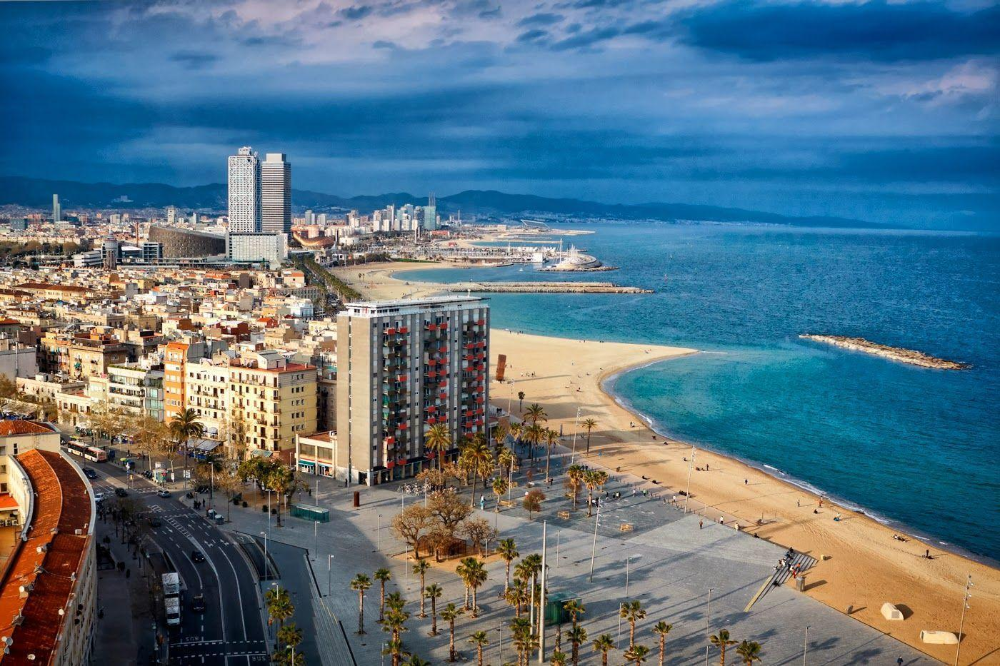
Getting there
Barcelona International Airport is one of the largest in Europe. It is located about 12 km from the city and consists of two terminals. Terminal T1 is new, it accepts a number of major international and European airlines. Terminal T2, which is mainly intended for small carriers and charters. You can get from the airport to the center of Barcelona (Plaza Catalunya) by bus A1 (from T1) and A2 (from T2). The trip will take 30 minutes. Buses run from 5.30 to 1.00. A cheaper option is bus 46, which serves both terminals and goes to the Plaza de España stop.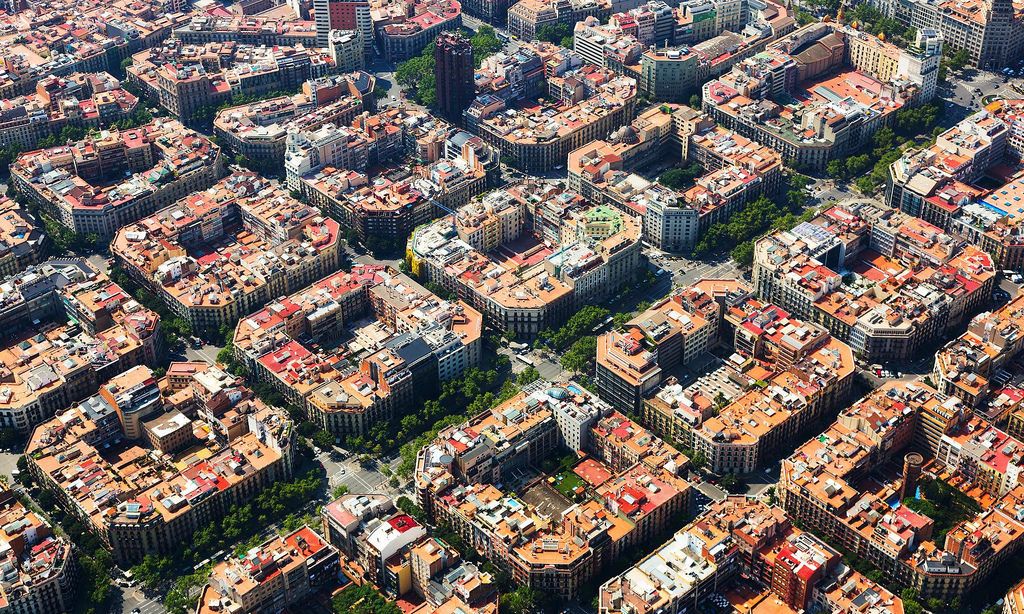
Streets of Barcelona
Barcelona has a well-developed railway connection with Nice, Paris, Marseille, Milan, Zurich, Madrid and other European cities. Bus service is available with most major cities in Spain and European countries incl. London, Amsterdam, Cologne, Brussels, Paris, etc. Barcelona can be reached by sea from Rome, Sardinia, Genoa, Livorno, Algeria.
Shopping
Barcelona is one of the main shopping centers in Spain. There are more than 30,000 stores in the Catalan capital. The main shopping street is the pedestrian Las Rambla. Most shops and malls are closed on Sundays. The huge La Boqueria, located in Ciutat Vella, stands out from the markets. The most fashionable shops and boutiques are located in the same area. Souvenirs can be bought in the Gothic Quarter and Las Rambla.
Food
The Catalans are proud of their cuisine, but to find a good and inexpensive place, we recommend turning off the tourist trails.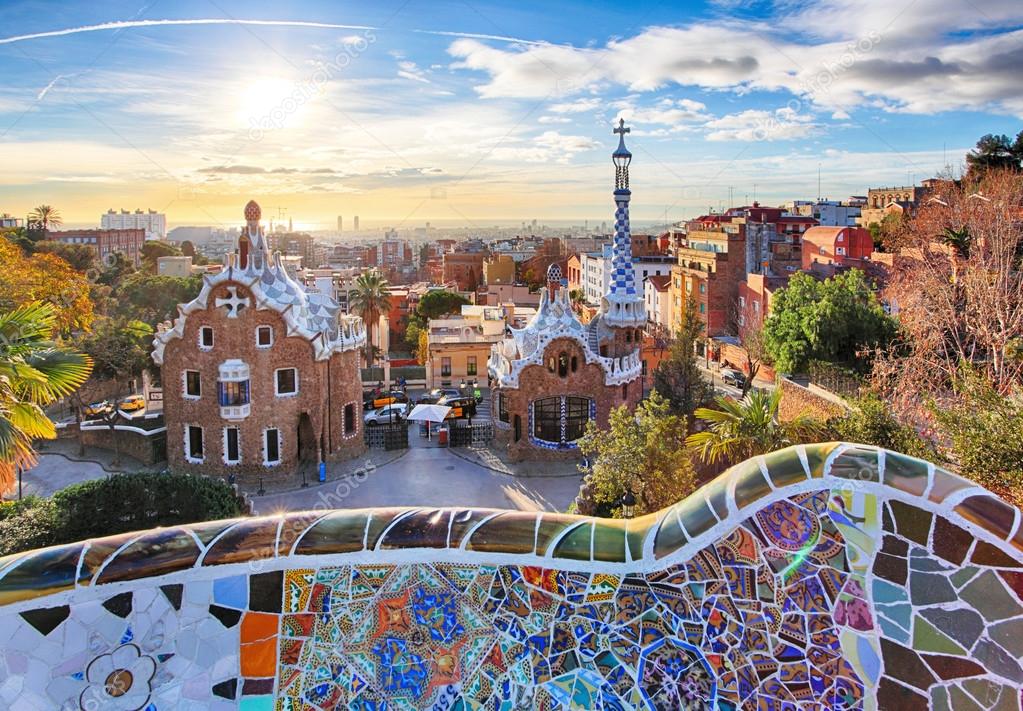
The best traditional restaurants are:
- Can Pineda – Carrer de Sant Joan de Malta, 55
- Ca l’Isidre – C / Flors, 12
- Petit Comitè – Passatge de la Concepció, 13
- Can Vallès – Aragó, 95
- Òsties Pedrín – Jerusalem 30
- Bar Angel – Ocata, 2 bis
- El Sortidor de la Filomena Pagès
Barcelona by night
Barcelona is famous for its nightlife. Almost every area of the city has its own bars and clubs.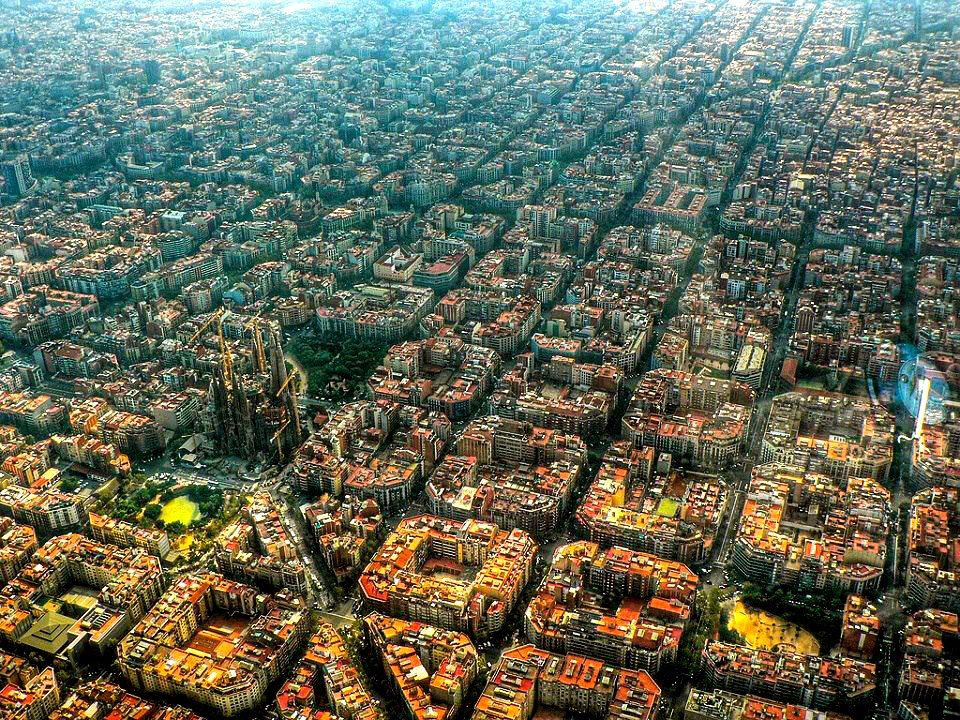
Attractions
The main attractions of Barcelona are concentrated in the following areas: the Old Town (Ciutat Vella), Eixample and the port with the hill of Montjuic. The Old Town is the oldest part of the Catalan capital. Here you can find evidence of more than two thousand years of history of the city: from the ancient Roman period to the Middle Ages. The port and hill of Montjuic is a seaside part of the capital of Catalonia, where a shipyard and a large park are located. Eixample is a new city designed in the 19th century.
Gothic Quarter
Old Town – the historical core of Barcelona with an area of about 500 hectares. Until the middle of the 19th century, it was surrounded by fortress walls. A fragment of the original city fortifications can be found at the medieval shipyard, within the walls of which the maritime museum is located. The region consists of four parts.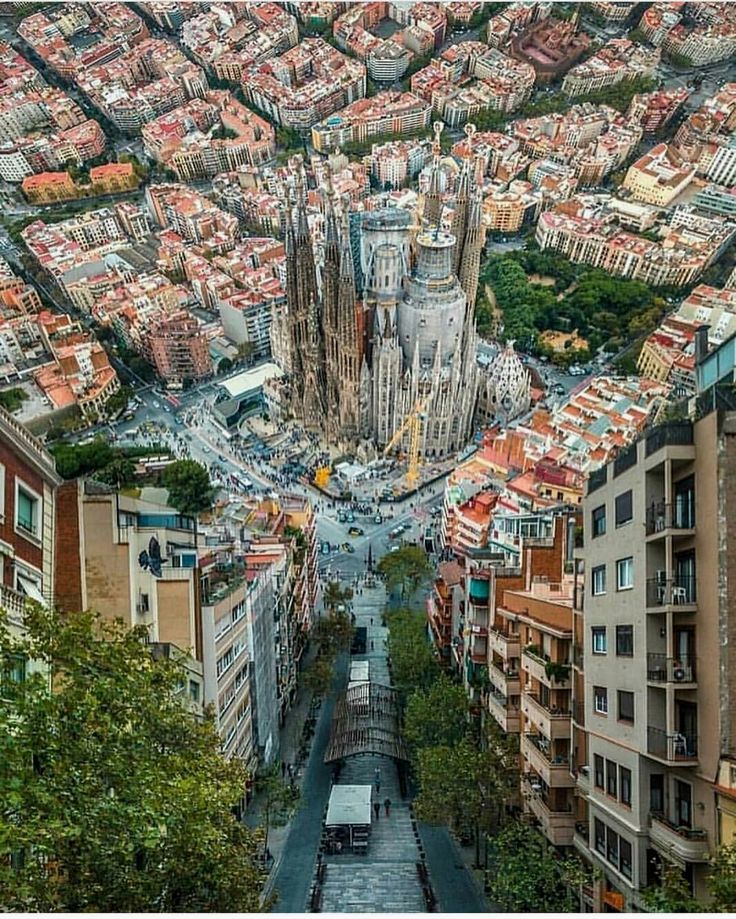
The central part of the old town – the Gothic Quarter. It has been the center of the city since Roman times. Here you can see the ruins of Roman buildings and plunge into the labyrinth of narrow medieval streets. In the Gothic Quarter, you can discover charming atmospheric places and picturesque quiet squares, enlivened by the emotions of people and the sounds of guitars, and in quaint courtyards, sit in cute little cafes with terraces.
Cathedral of the Holy Cross and Saint Eulampia
Main sights of the Gothic Quarter:
- Cross and St. Evlampii – the Cathedral of Barcelona, founded in the 13th century, a masterpiece of Gothic. The cathedral was built over 6 centuries. The temple building was built on the site of an early Christian church destroyed by Al-Mansur. Only the baptistery has survived from the ancient building. The main façade and the bell tower were completely finished at the end of the 19th century in neo-gothic style. Inside, the cathedral is very impressive: from the magnificent choir and pulpit to the crypt where the relics of St.
Eulampia.
- Santa Maria del Pi is a beautiful 14th century Gothic basilica. The vaulted ceiling is one of the highest in Spain, and the four stained glass windows are original (the work of Josep Ravella). The cathedral has a high 54-meter tower, which is the tallest medieval building in the Old Town.
- The City Hall is a building in Sant Jaume Square, founded in the 14th century. It is located on the site of the ancient Roman Forum. The town hall has a neoclassical façade, hiding its gothic past.
- Barcino – a sculptural composition of 7 giant letters, located opposite the Roman wall. Depicts the ancient name of the capital of Catalonia.
- San Felip Neri Church is a small religious building hidden in a small square with a romantic atmosphere.
- A Roman wall and an ancient aqueduct (Casa de l’Ardiaca) adjoins Plaza Nova. Since the 12th century, the seat of the church diocese has been located here.
- Sant Just e Pastor – considered the oldest church in Barcelona.
was founded at 9century after the Frankish conquest. Unfortunately, almost nothing remains of the Romanesque and Gothic churches.
- Ramón Berenguer el Gran square and Laietana street – section of the Roman wall with the Gothic chapel of Santa Agata. This area is a majestic mixture of two different eras: Roman and Medieval. Initially, the city’s fortifications had 74 towers. The walls were 16 meters high. The Royal Chapel of Santa Agata was built in the 14th century.
- Plaza del Rey is one of the most charming squares in Barcelona, a true gothic ensemble. Here is the majestic royal palace, which was the residence of the rulers of Catalonia from the 13th to the 15th century, and the watchtower of King Marti.
Plaza del Rey
La Rambla is the famous pedestrian boulevard that divides the historic center into two parts. This is the busiest street in Barcelona. It was founded in the 18th century following the contours of the medieval walls.
La Rambla
La Rambla is home to impressive historic buildings, many shops, Barcelona’s greatest theater and the spectacular Boquería Market.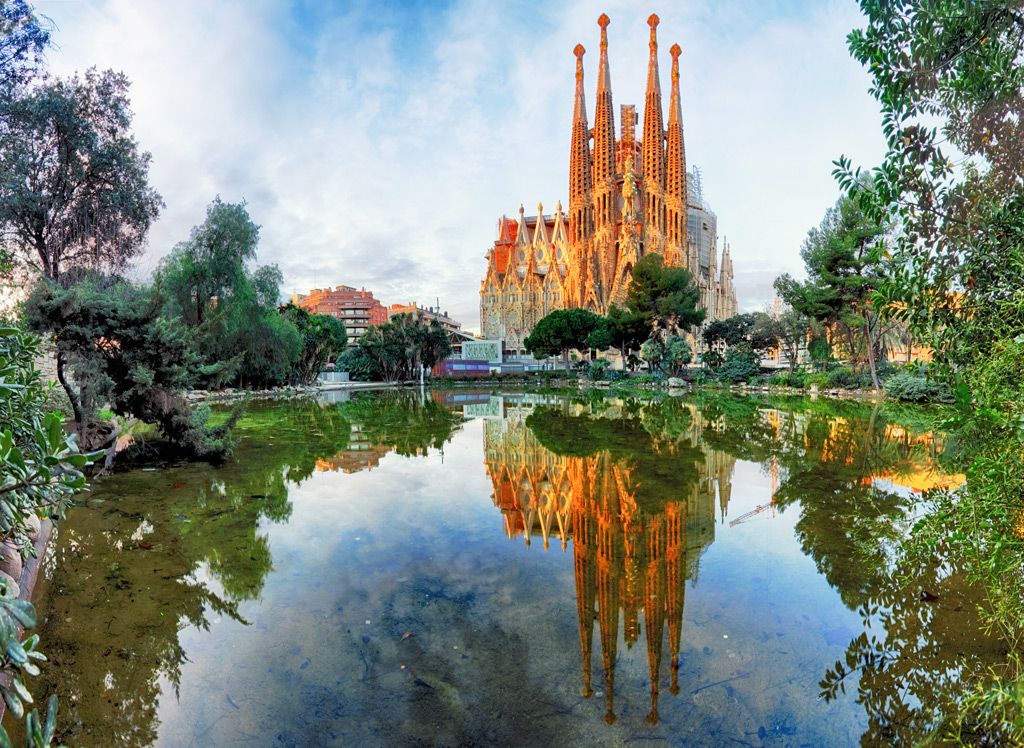
La Ribera
La Ribera is a charming area that has been chosen by the bohemians. In the past, the richest residents of Barcelona lived here. Now it houses museums, art galleries, restaurants and wine bars.
Port Vell
Port Vell – medieval shipyard and port. Here is the starting point for pleasure boats. The Palau de Mar red brick building houses one of the most interesting museums in Barcelona – the Museum of the History of Catalonia.
Citadel Park
Citadel Park was built in the 19th century on the site of a military fortress for the World Exhibition.
Sagrada Familia
Sagrada Familia (Cathedral of the Holy Family), the symbol of Barcelona and Gaudí’s masterpiece, an impressive basilica and one of the most unusual churches in Europe. Included in the list of UNESCO World Heritage Sites. It is one of the most famous long-term construction projects in Europe. The church was started by Gaudí at the end of 19century, but has not yet been completed.
Located in the northern part of Barcelona in the Eixample district.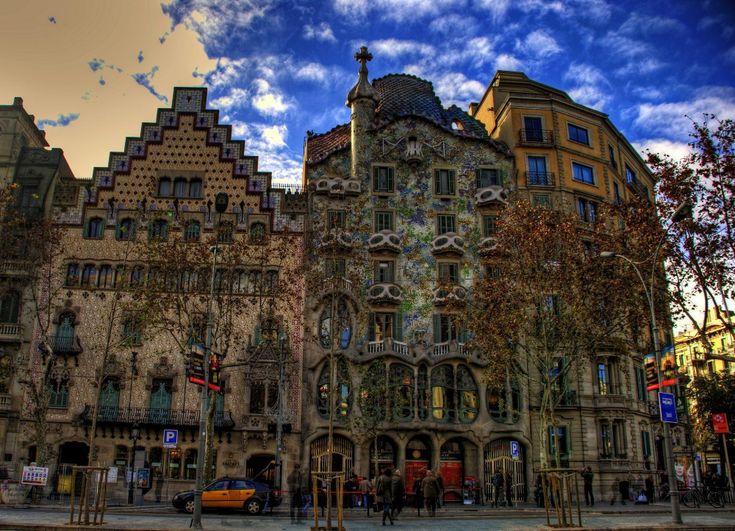
Park Güell
Park Güell is another visiting card of Barcelona. This cheerful and colorful park was created by Gaudi and is included in the list of UNESCO World Heritage Sites. Viaducts, grottoes, a colonnaded hall, winding staircases and other charming places are scattered throughout the space. These imaginative structures are adorned with colorful ceramic fragments. The terrace of the park offers a beautiful view of the city and the sea. Gaudi himself was very fond of this area. This was also his home.
Casa Mila
Casa Mila is an avant-garde residential building in the Eixample district built in the early 20th century. It is the most famous secular building of Gaudi and is included in the list of UNESCO World Heritage Sites.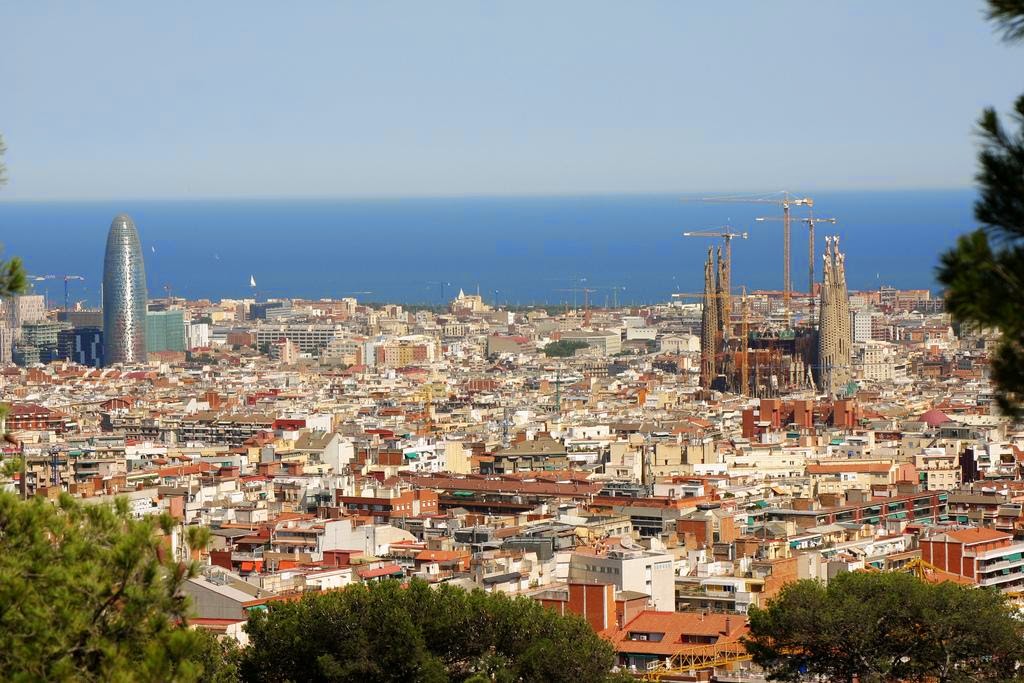
Casa Batlló
Casa Batlló is another Gaudí masterpiece and one of the most beautiful buildings in Barcelona. It is a wonderful example of modernist architecture and is included in the list of UNESCO World Heritage Sites. The fantastic mansion was designed as a private residence for a major textile worker, Josep Batllo. With free-swinging shapes and ornate façade, this dreamlike building looks like a castle from a surreal fairy tale. Most of the details of his design completely depart from any architectural trends.
Montjuic Park
Montjuic is a hill near the port with the largest park in Barcelona – Tibidabo and the old Jewish cemetery. The beautiful palace houses the National Art Museum of Catalonia with collections of art from the 10th to the 20th century.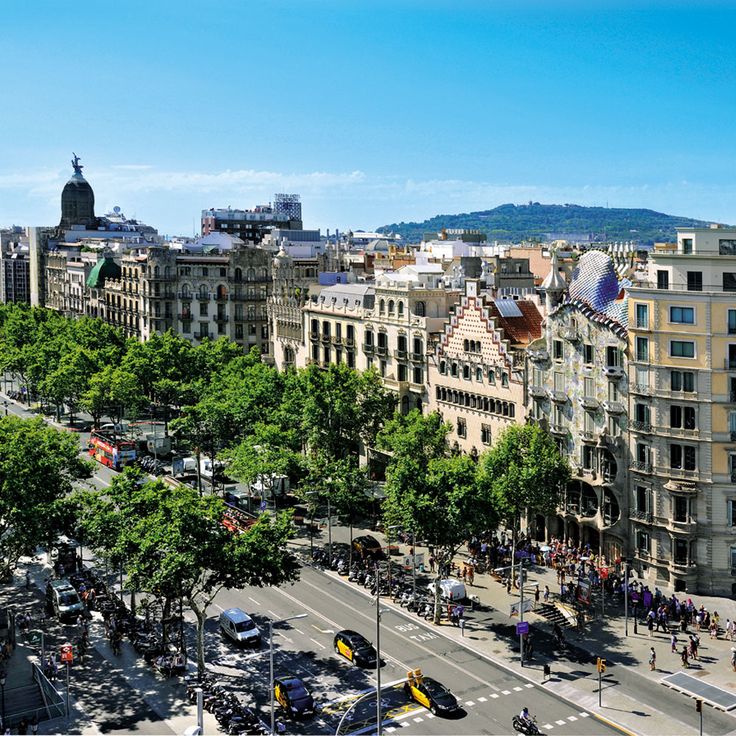
Monestir de Pedralbes
Monestir de Pedralbes is a 14th century monastery, a fine example of Catalan Gothic. Situated in a picturesque little park. The monastery museum houses a magnificent collection of medieval art from the 14th century.
Camp Nou
Camp Nou is one of the greatest football stadiums in the world and home to FC Barcelona.
Interesting excursions
Elena539
150 €128 for the excursion
Gaudi — one day alone with the genius
Get to know the most striking masterpieces and the life of an unsurpassed architect
9002 9020 150 €128 for the tour
Your ideal day in Barcelona
Builder tour: dream places, fascinating stories and the city through the eyes of locals
more tours
Spain
Alicante
Madrid
Sevilla
Barcelona on the map of Spain
Video
Guides and offline maps
Tourist map of Barcelona Transport map
City of Barcelona, Catalonia, Spain | Tourist information
The city of Barcelona (Barcelona) is the second most visited city in Spain and the second most populous city in Spain.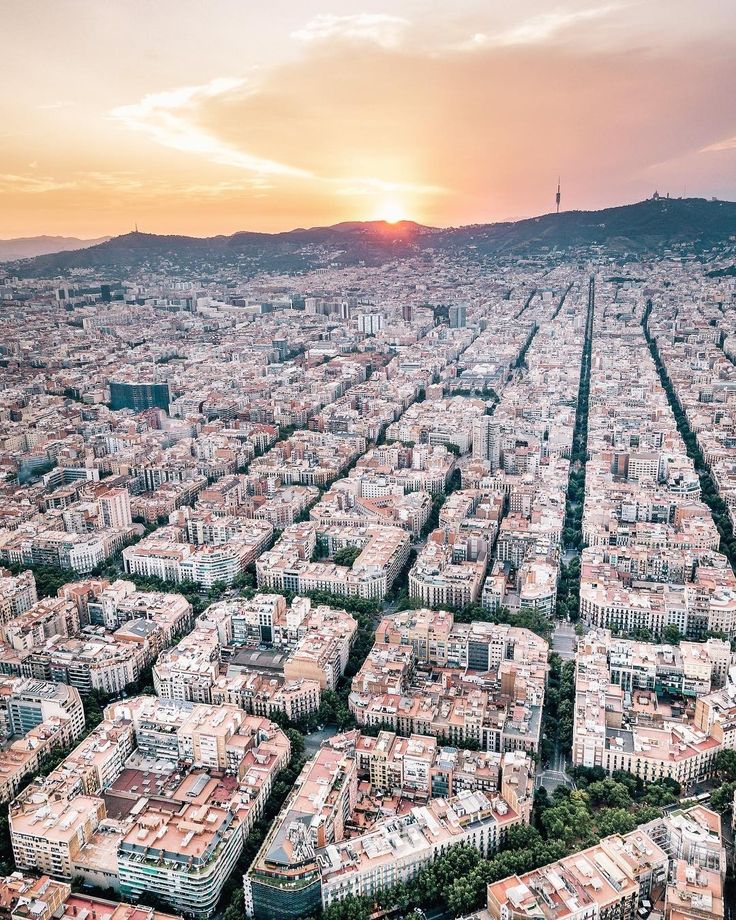
The city of Barcelona is located in the northeast of Spain. Barcelona is the capital of the autonomous region of Catalonia. The distance from Barcelona to the French border is about 120 kilometers. The Mediterranean coast in Catalonia is a popular summer vacation destination for residents of many European countries (including Russians). Most tourists arrive at the resorts of Catalonia through the airport of Barcelona. Tourists are also attracted to Barcelona by the interesting history of the city, a large number of attractions, museums.
The city of Barcelona is located on the coast, on a plateau (plain) about 5 kilometers wide. To the northwest of the city lies the Collserola mountain range, to the southwest the Llobregat River, and to the north the Besòs River.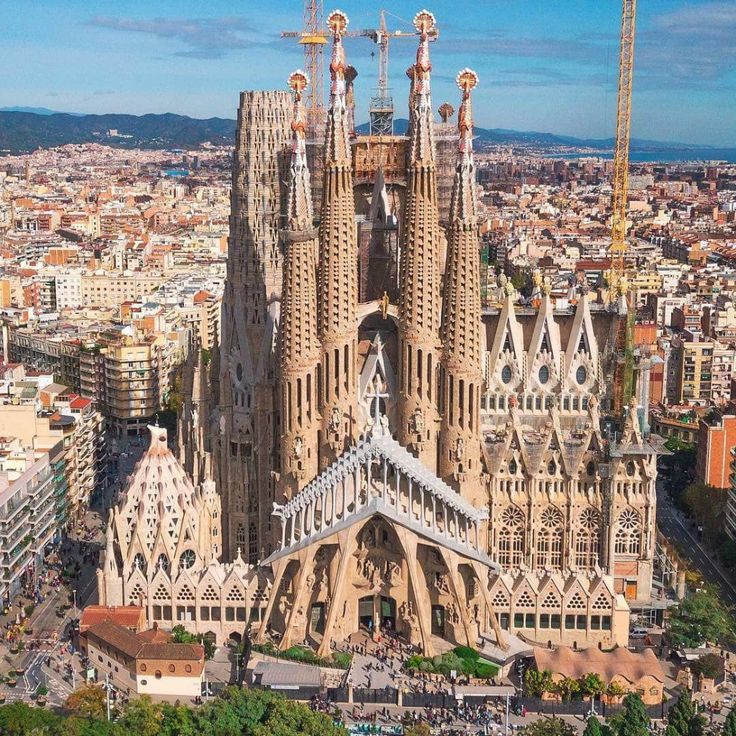
Distance from Barcelona to some cities: Nice – 660 kilometers, Malaga – 920 kilometers, Madrid – 620 kilometers, Moscow – 3500 kilometers.
In Barcelona famous artists such as Pablo Picasso, Joan Miro, Salvador Dalí and the architect Antoni Gaudí lived and worked. Their work still attracts tourists to Barcelona.
In the photo: Plaza Catalunya – the central square of Barcelona.
The most popular places for tourists in Barcelona
- The tourist center of the city can be considered the so-called Gothic Quarter (Barri Gòtic), which is located between Plaza Catalunya, La Rambla, Via Laetana and the port area. Most of the buildings in the Gothic Quarter were built in the XIV – XV centuries. There are also fragments of buildings from the time of the Roman Empire. At the end of 19th and early 20th century, some of the buildings were restored or restored to attract tourists.
The layout of the medieval city, medieval streets and houses have survived to this day. The most famous building in the Gothic Quarter is Barcelona Cathedral.
- Montjuïc Hill is also a touristy part of the city of Barcelona. The hill, about 180 meters high, is located southwest of the city center (Gothic Quarter), next to the port and the seashore. On the hill there is an observation deck that overlooks Barcelona, the port and the Mediterranean Sea.
- The Magic Fountain, the National Art Museum of Catalonia (MNAC), the Archaeological Museum, the Joan Miro Foundation Museum, the Montjuic Fortress, the Olympic Stadium are also located on the hill of Montjuic. The Montjuïc hill can be reached by cable car (Funicular de Montjuïc).
- The Rambles is the most popular tourist street in Barcelona. The Rambla runs from Plaza Catalunya to Portal de la Pau (near the port). The street is the border between the Gothic quarter and the Raval quarter. The length of the street is approximately 1.
2 kilometers. Famous attractions such as the Canaletes Fountain, the Boqueria Market, the Liceo Gran Theatre, the Erotic Museum, the Columbus Monument, the old shipyard building and the Maritime Museum are located on and near the Rambla.
You can check the location of points of interest in Barcelona on the city map.
Excursions in Barcelona – choose and book online.
In other parts of the city there are also many interesting places for tourists:
- The Sagrada Familia is the most famous landmark of Barcelona. The temple has been built according to the project of the famous architect Gaudi for more than 100 years. Sagrada Familia is located north of Plaza Catalunya.
- Other works by the architect Gaudí are located in Barcelona. The most famous of them are Park Güell, Casa Batlló (also known as House of Bones) and Casa Mila.
- Mount Tibidabo is located in the northern part of the city.
At the top of Tibidabo is an amusement park, the Temple of the Sacred Heart (Sagrat Kor).
- FC Barcelona is one of the most famous football clubs in Europe. Many football fans, having arrived in Barcelona, visit the club’s stadium. The Barcelona Football Club Museum is the second most visited museum in Barcelona (after the Picasso Museum). The Canaletes Fountain is also related to the city’s football club. FC Barcelona fans gather at the fountain after the victory of their favorite team.
On the photo: Las Ramblas, the main tourist street of the city.
Transport
How to get to Barcelona
The most convenient, fastest and cheapest way to get to Barcelona is by plane. Many airlines operate regular flights to Barcelona and Reus Airport. You can find out the prices for air tickets (and buy a ticket) online (on the Internet).
There are people who don’t like flying. In this case, you can get to Barcelona by train or bus.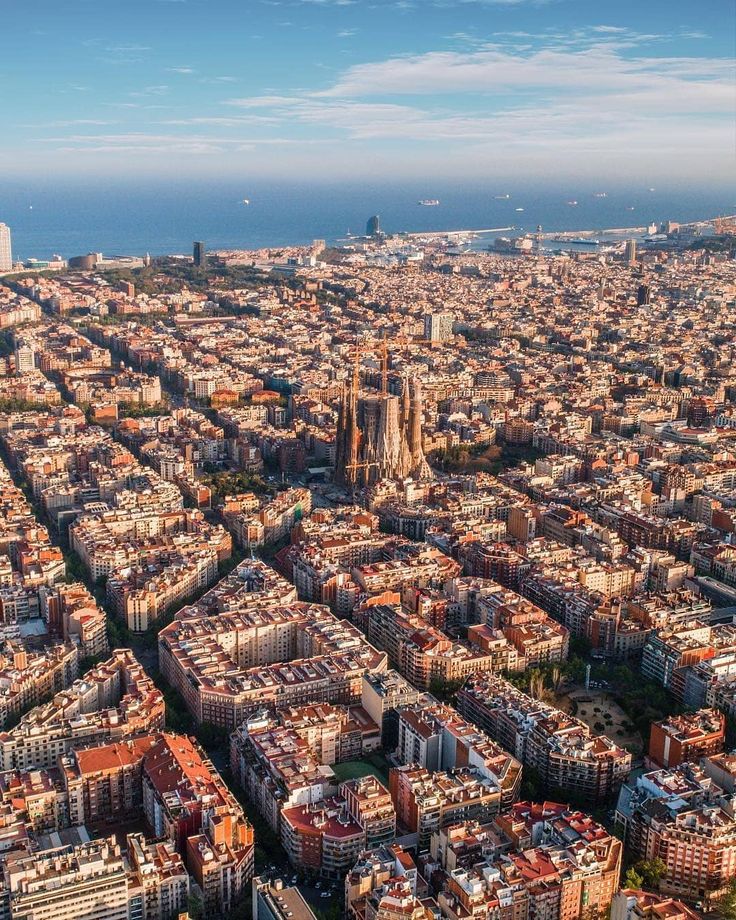
Barcelona El Prat Airport
Barcelona International Airport (Aeropuerto de Barcelona-El Prat) is the second busiest airport in Spain. The airport is located at a distance of approximately ten kilometers southwest of the city center, next to the seashore. Most tourists arrive in Catalonia through Barcelona Airport. The airport has two terminals. Terminal 2 has a train station. Trains (R2 line) run to Maçanet-Massanes, Barcelona Sants, Passeig de Gràcia stations in Barcelona. There is a bus service between terminals 1 and 2 of the airport. The airport can also be reached by bus from Plaza Catalunya and Plaza de España.
Railway
The railway connects Barcelona with Madrid, Girona, Valencia, Tarragona and other cities in Spain.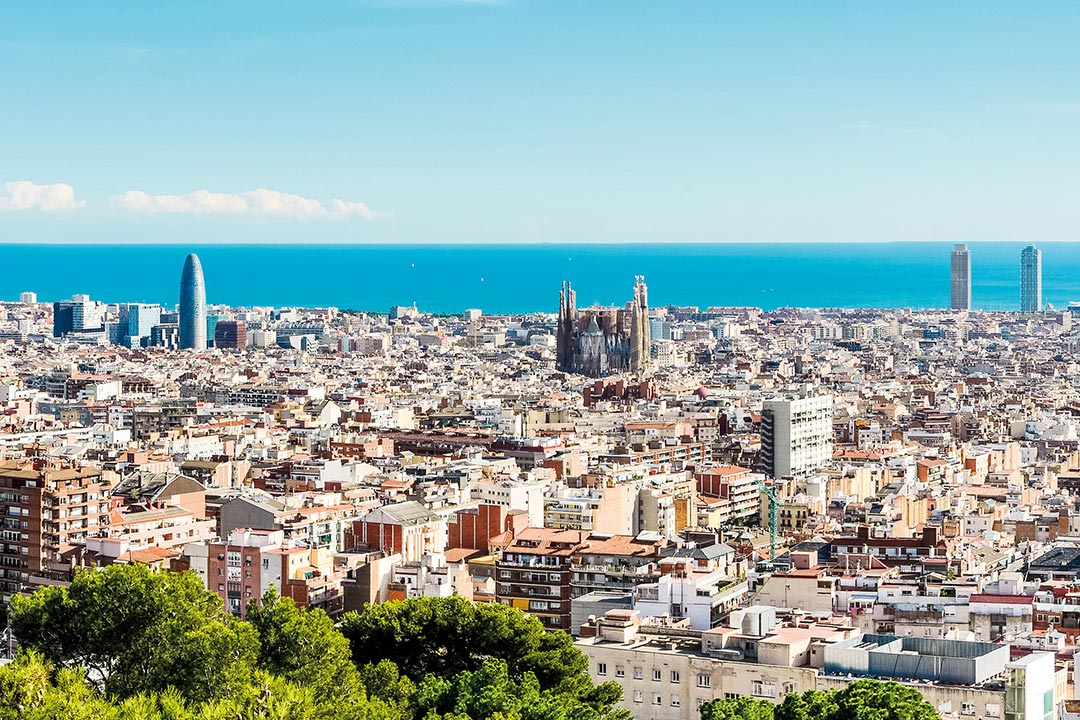
Barcelona Sants is the main train station in Barcelona. The station is in the Sants-Montjuic area of Barcelona, a little way west of the city centre. The station is located at the end of Avinguda Roma, between Plaça dels Països Catalans and Plaça Joan Peiró.
The Estació de França train station is the second busiest station in Barcelona.
The construction of the railway station “Estació de la Sagrera” is underway, which will serve a large number of trains.
Bus station
The main bus station in the city is “Barcelona Nord”. Buses depart from the bus station to many cities in Europe, for example: Paris, Lyon, Girona, Zaragoza, Andorra (Cadí), Valencia, Venezia, Roma, Amsterdam. Many buses also stop at Sants station. Bus station Barcelona Nord is located in the central part of the city, northeast of Plaza Catalunya, near the Arc de Triomphe.
Bus station address: Barcelona North Bus Station, Calle de Alí Bei, 80, Barcelona.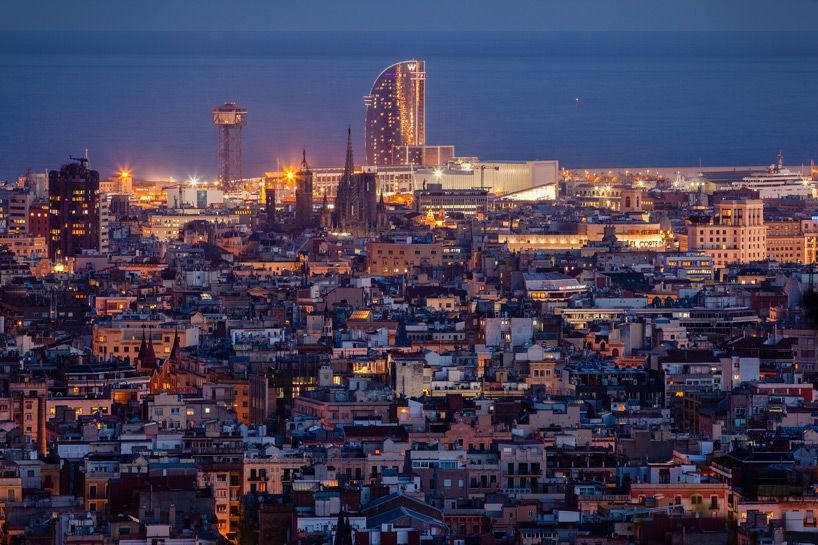
Port
The port of Barcelona is one of the largest ports (in terms of traffic) of ports in Spain and Europe. The port is one of the most popular cruise ship anchorages in the Mediterranean. The port consists of several parts. Tourist services are mainly handled by Port Vell (Old Port).
The port serves passengers of cruise ships. Almost all cruise companies operating in the Mediterranean include a visit to Barcelona in their itinerary. Ferries depart from the port terminals to the Balearic Islands (Majorca, Menorca, Ibiza and Formentera). Near the port is the Maremagnum shopping and entertainment center (shops, cinema, aquarium). The port is located in the city center, next to the Rambala pedestrian street and close to the Estació de França (Barcelona França) train station.
On the photo: view of the port area from the hill.
Mediterranean cruises. Sea cruises in the Mediterranean Sea is one of the best ways to spend your holidays with maximum pleasure and comfort.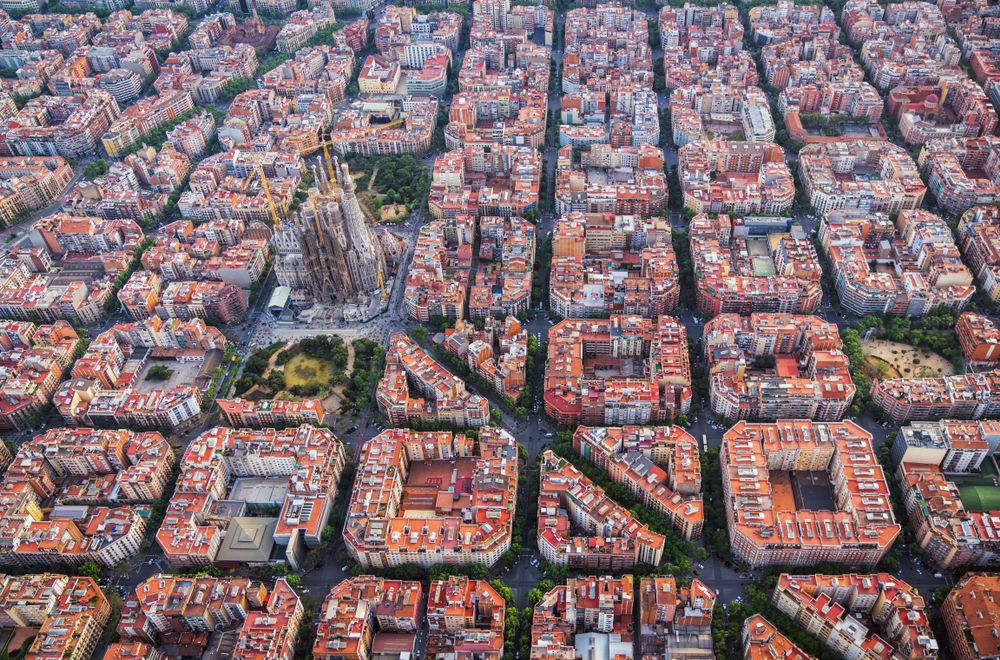
Tourist buses
The Bus Turístic tourist buses in Barcelona are a very convenient service for tourists to explore the city and sightseeing. The tourist bus is a double-decker bus, the second floor of which has no roof. From the second floor it is convenient to see the sights.
Tourist buses “Bus Turístic” have three circular routes in Barcelona. Buses are equipped with audio guides in 11 languages (included in the ticket price). Having bought a ticket for one day, you can get off the bus at the places you need and return to the bus an unlimited number of times. You can switch from one route to another. The cost of a one-day ticket in 2016 was approximately 25 €.
See also:
- Map of the city of Barcelona for tourists.
- What places to visit in Barcelona.
- Excursions in Barcelona – choose and book online.

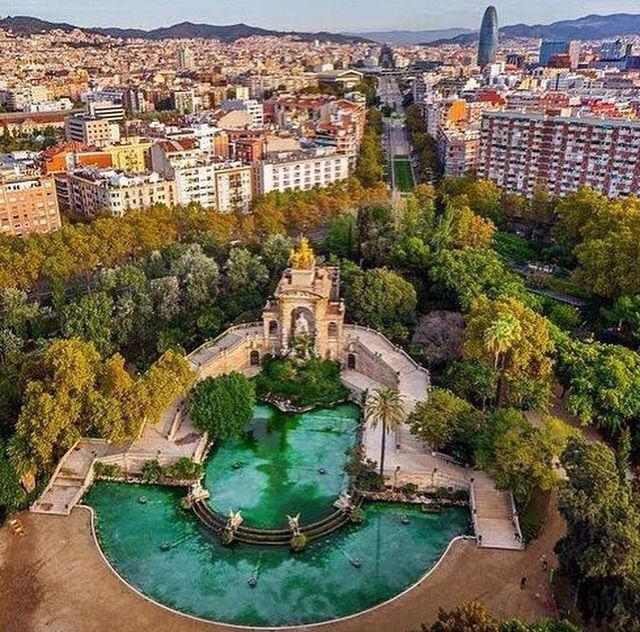 Whether you want to try the original paella from Valencia or experience the City of Arts and Sciences, this laid back city has something for everyone, and at a cheaper price.
Whether you want to try the original paella from Valencia or experience the City of Arts and Sciences, this laid back city has something for everyone, and at a cheaper price. 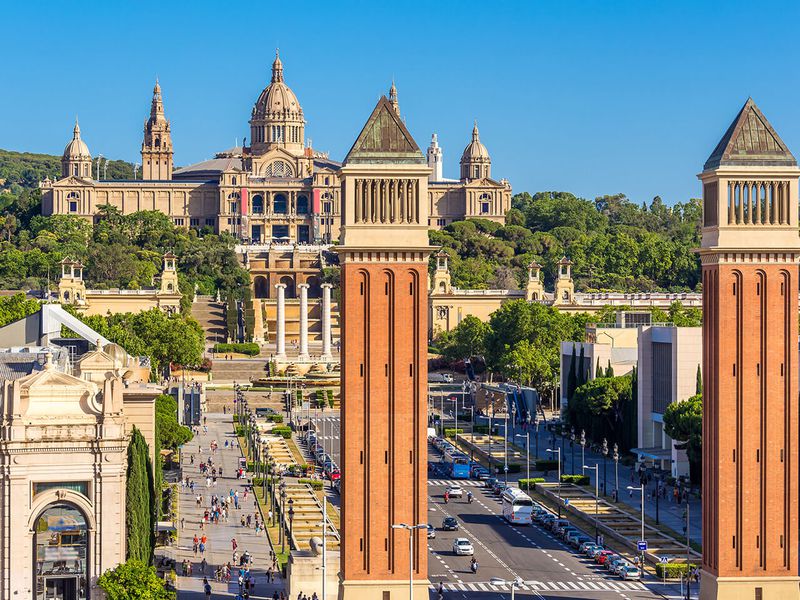 Explore the art scene, walk where Pablo Picasso was born, have a night out, or simply enjoy the beautiful promenades and 16 beaches surrounding this port city in Andalusia.
Explore the art scene, walk where Pablo Picasso was born, have a night out, or simply enjoy the beautiful promenades and 16 beaches surrounding this port city in Andalusia. 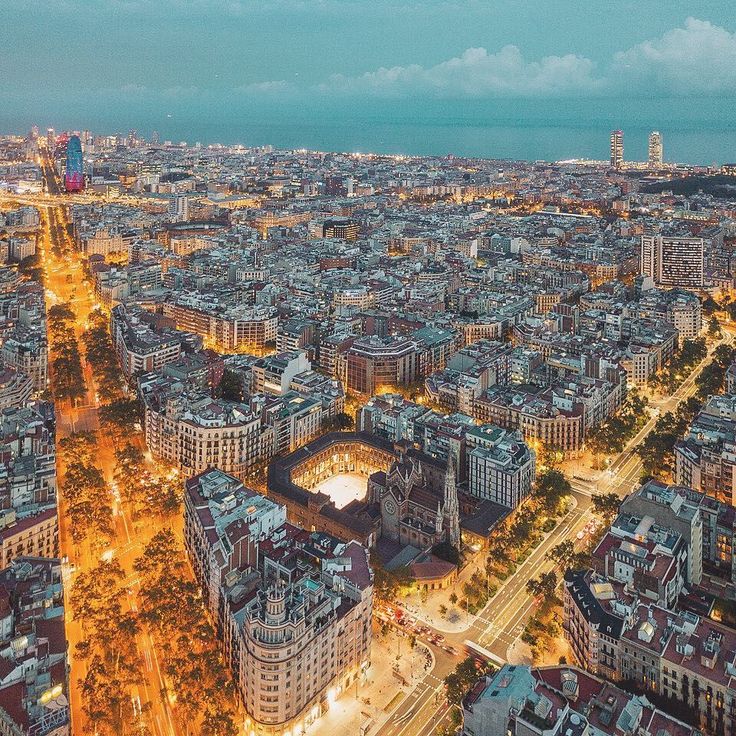
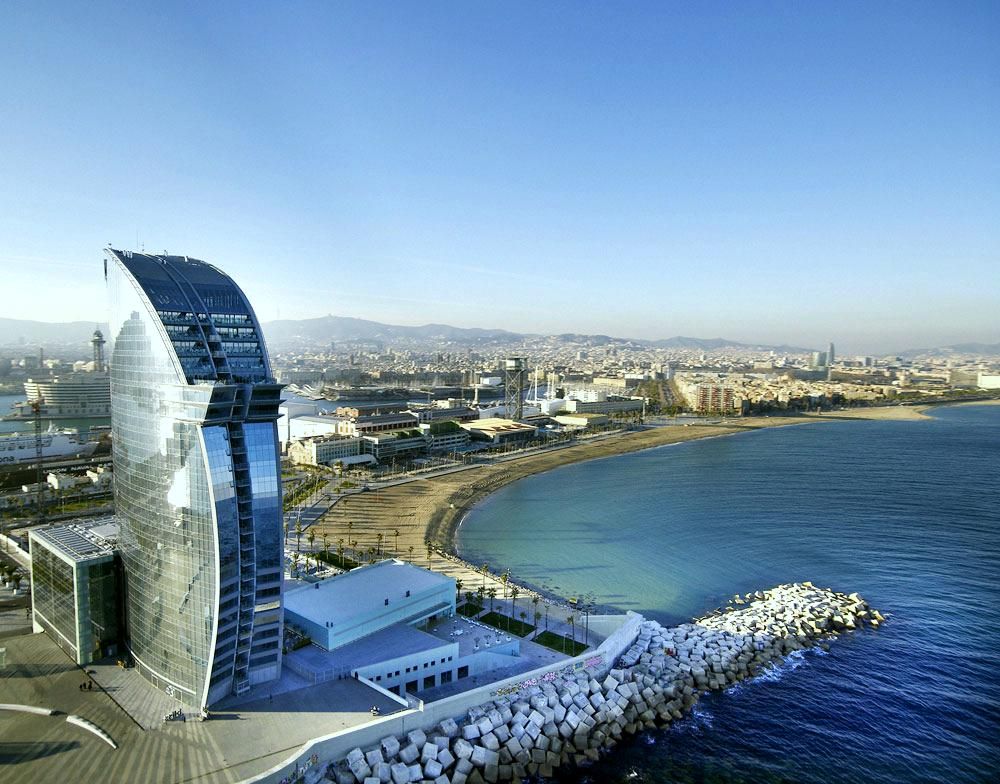
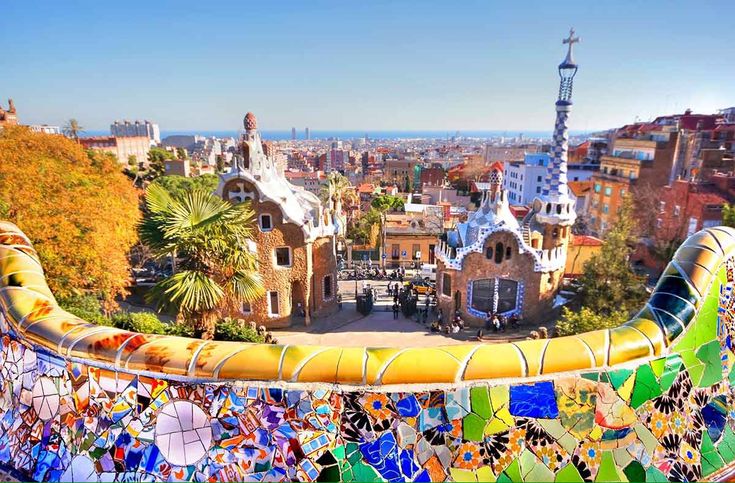
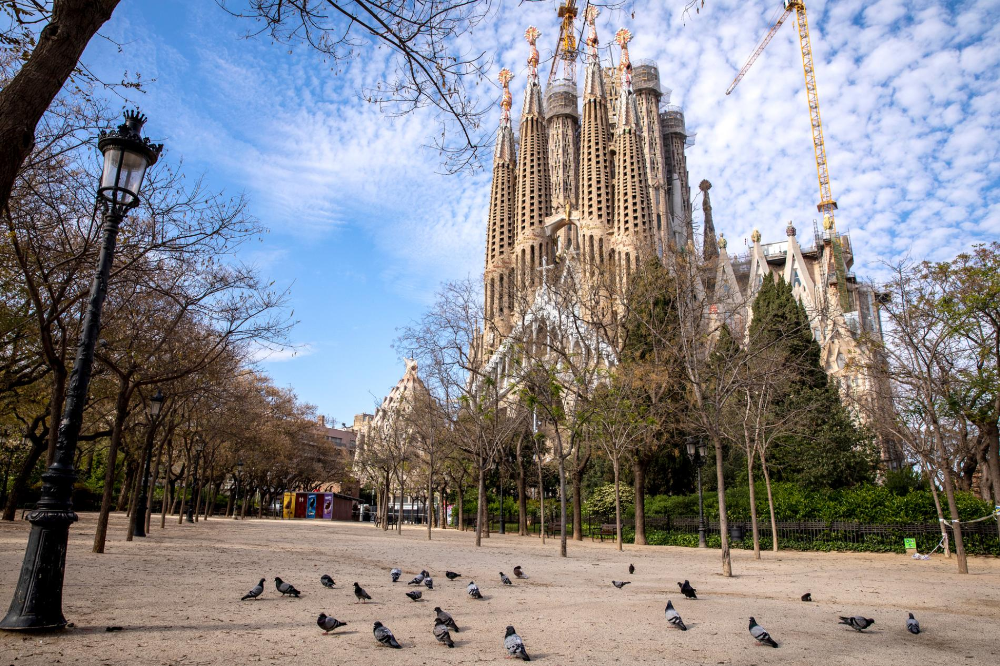 Eulampia.
Eulampia. 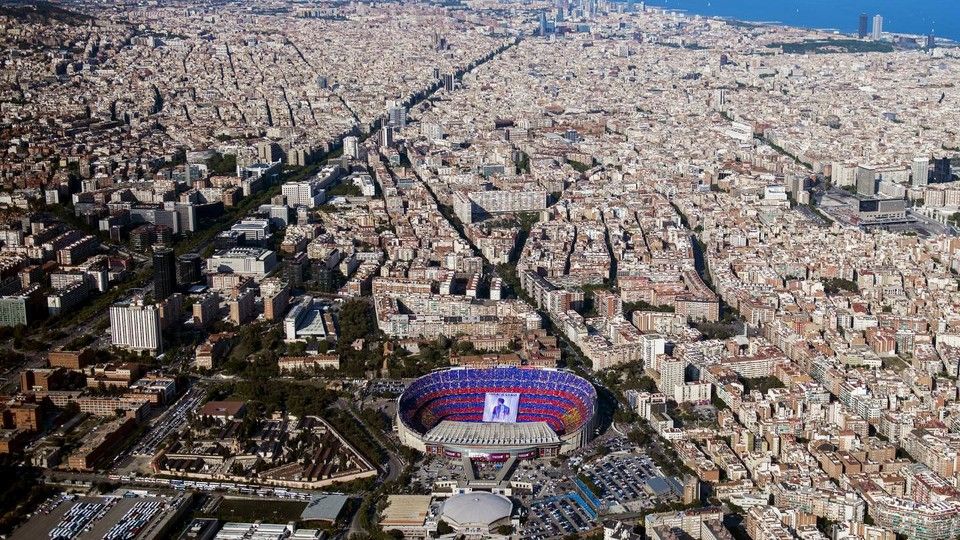 was founded at 9century after the Frankish conquest. Unfortunately, almost nothing remains of the Romanesque and Gothic churches.
was founded at 9century after the Frankish conquest. Unfortunately, almost nothing remains of the Romanesque and Gothic churches. 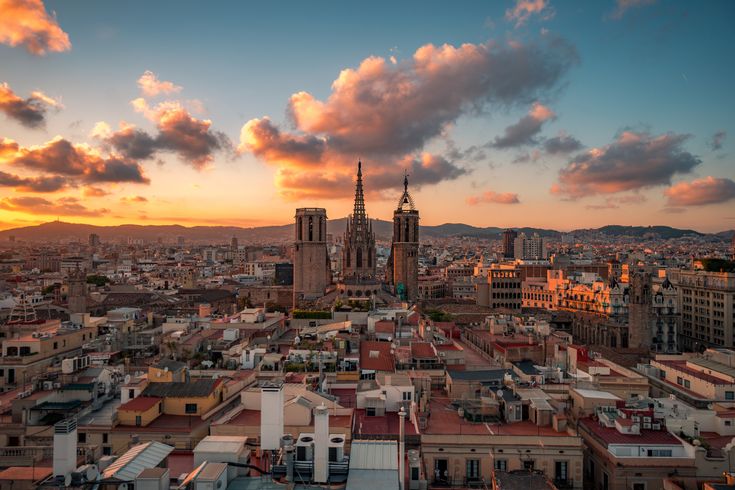 The layout of the medieval city, medieval streets and houses have survived to this day. The most famous building in the Gothic Quarter is Barcelona Cathedral.
The layout of the medieval city, medieval streets and houses have survived to this day. The most famous building in the Gothic Quarter is Barcelona Cathedral. 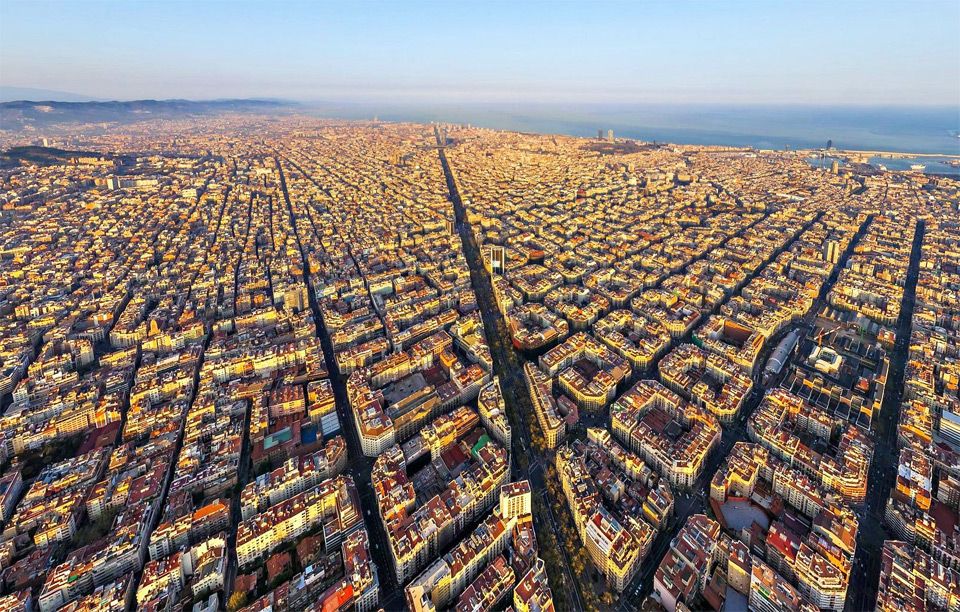 2 kilometers. Famous attractions such as the Canaletes Fountain, the Boqueria Market, the Liceo Gran Theatre, the Erotic Museum, the Columbus Monument, the old shipyard building and the Maritime Museum are located on and near the Rambla.
2 kilometers. Famous attractions such as the Canaletes Fountain, the Boqueria Market, the Liceo Gran Theatre, the Erotic Museum, the Columbus Monument, the old shipyard building and the Maritime Museum are located on and near the Rambla.  At the top of Tibidabo is an amusement park, the Temple of the Sacred Heart (Sagrat Kor).
At the top of Tibidabo is an amusement park, the Temple of the Sacred Heart (Sagrat Kor). 